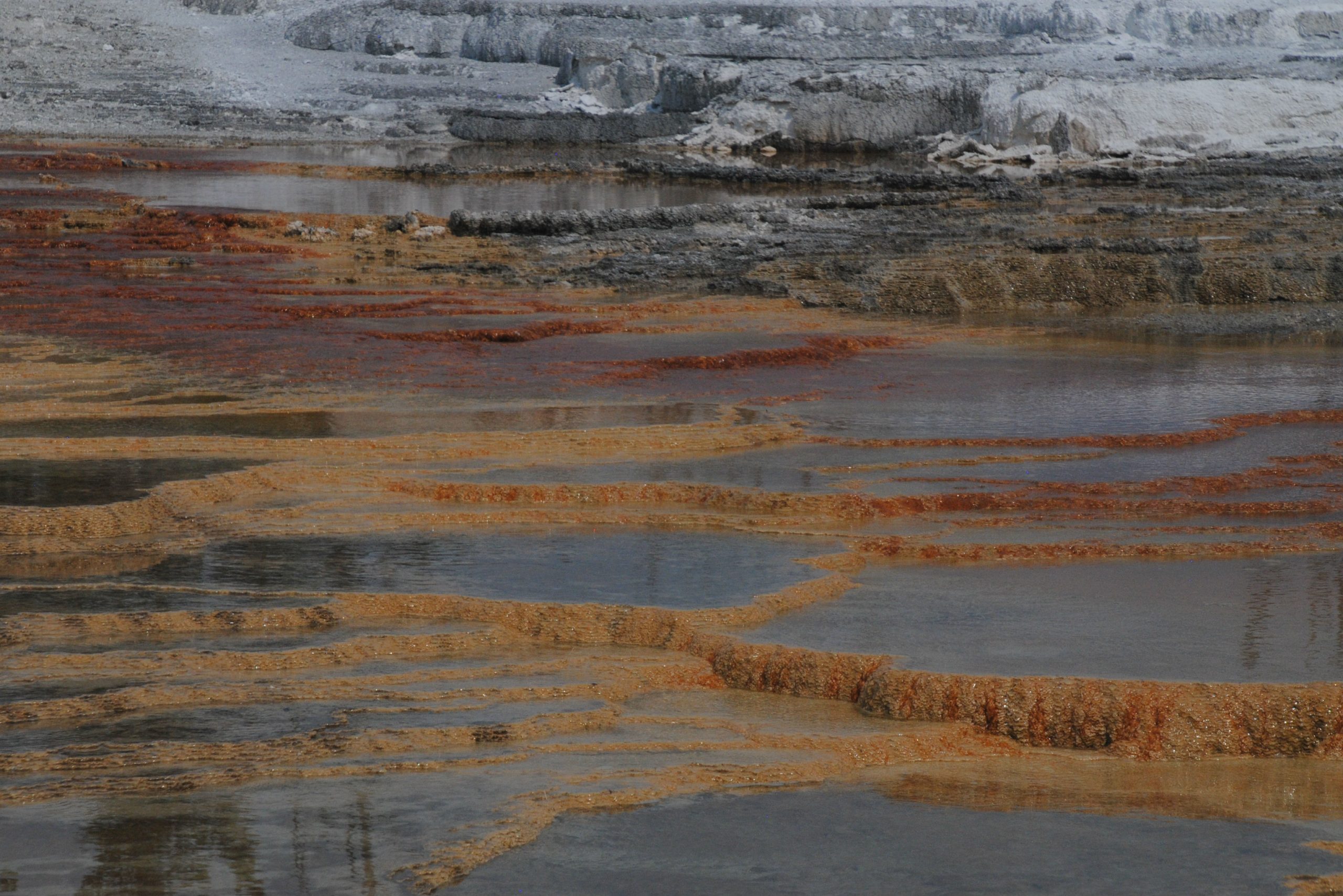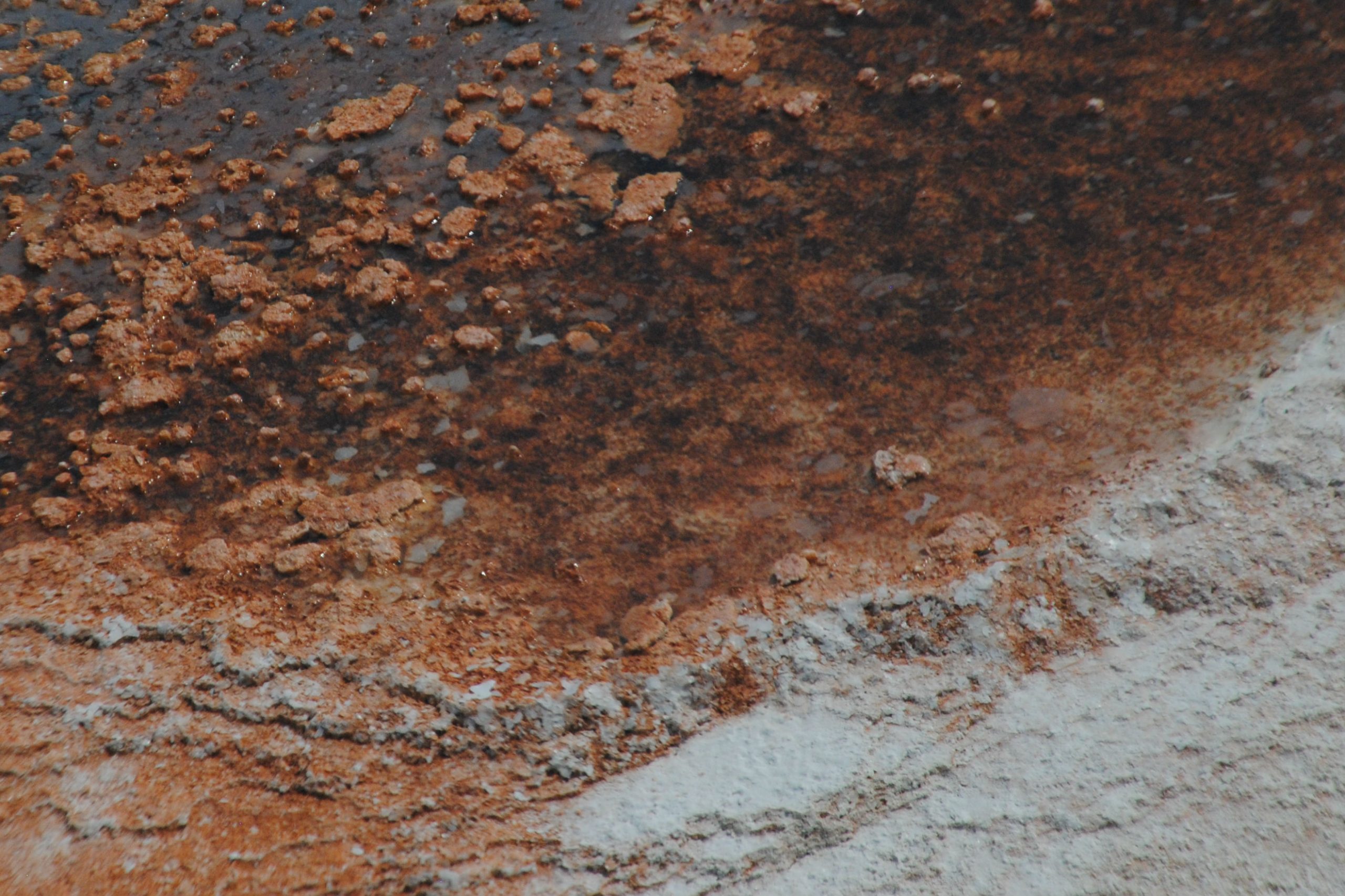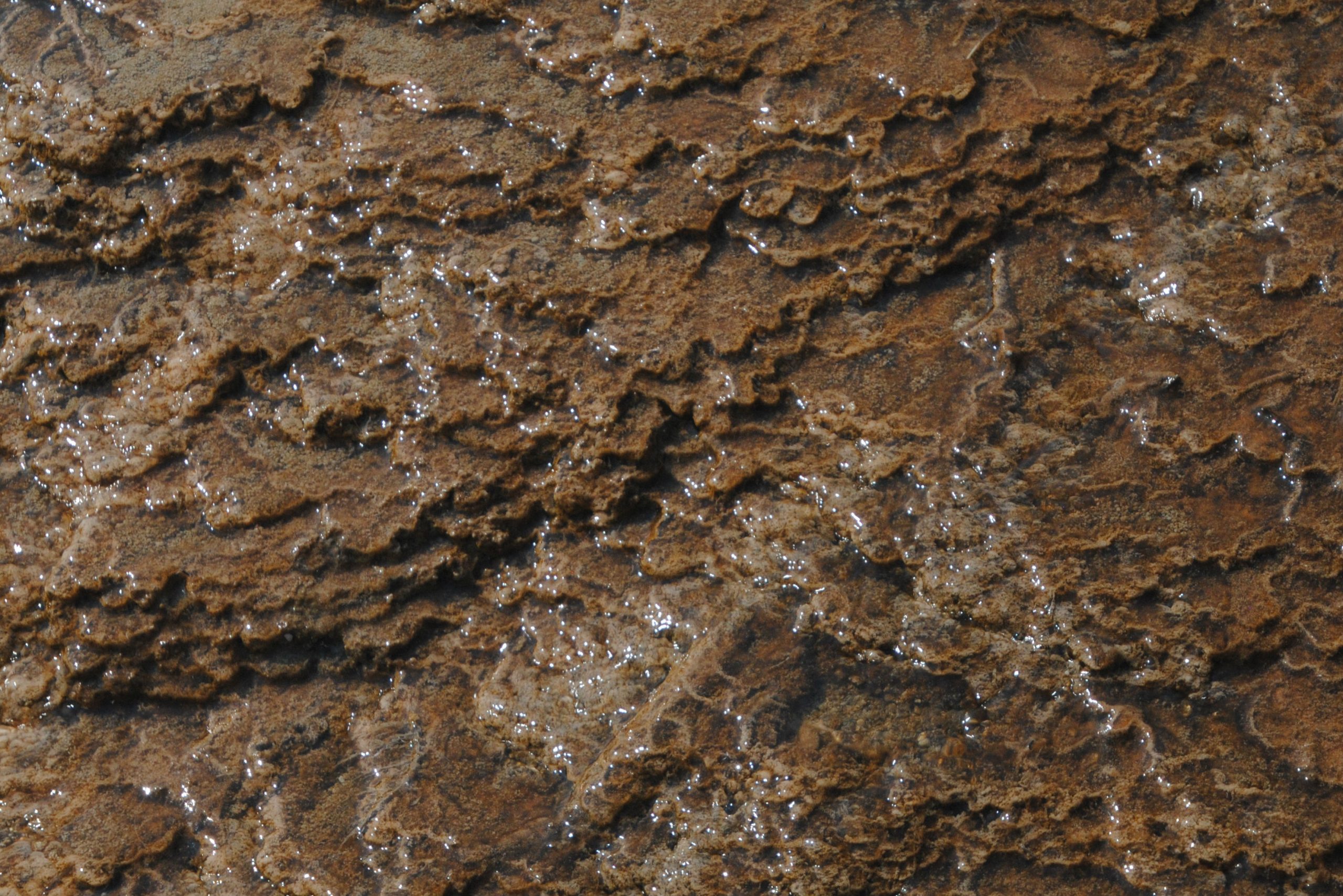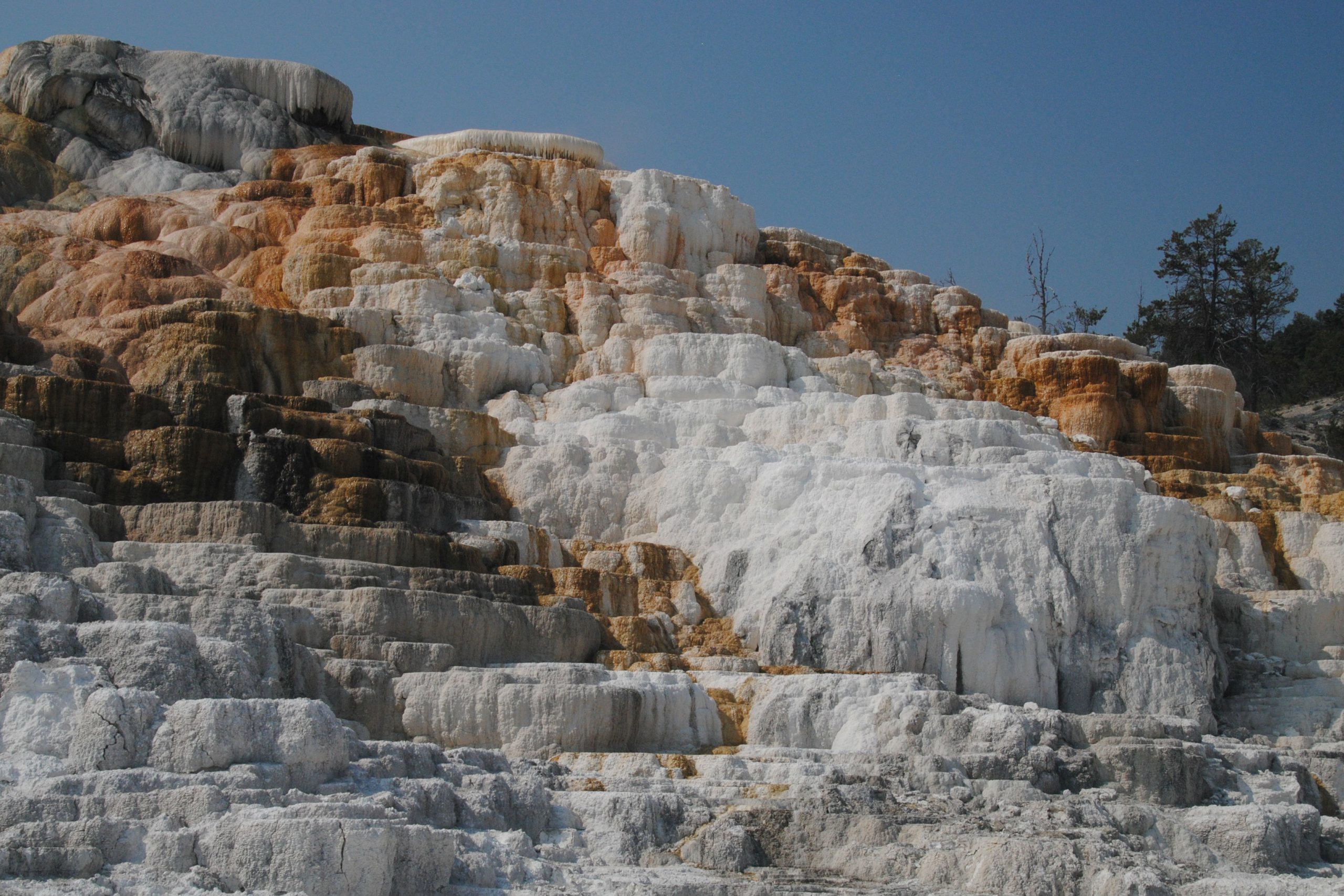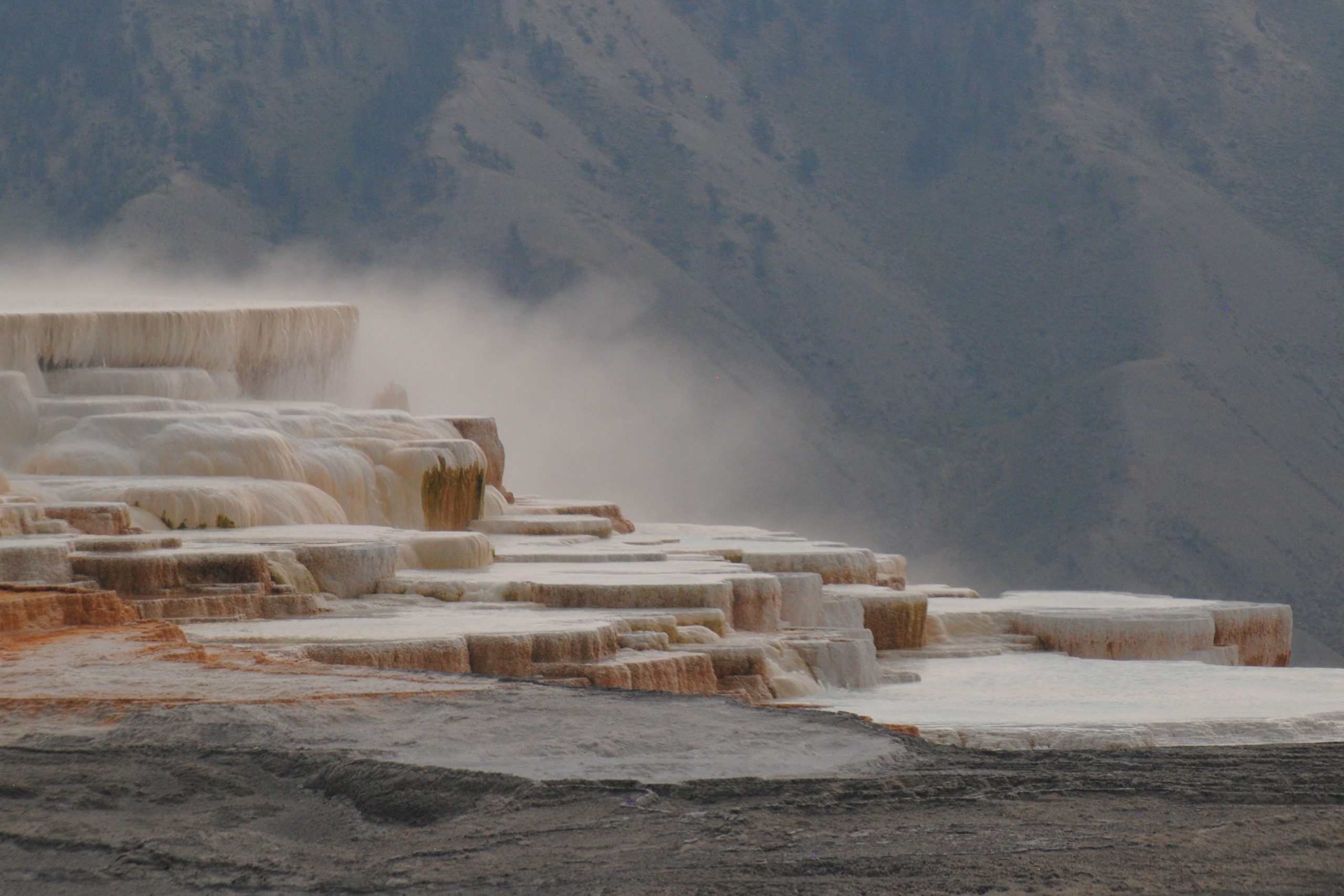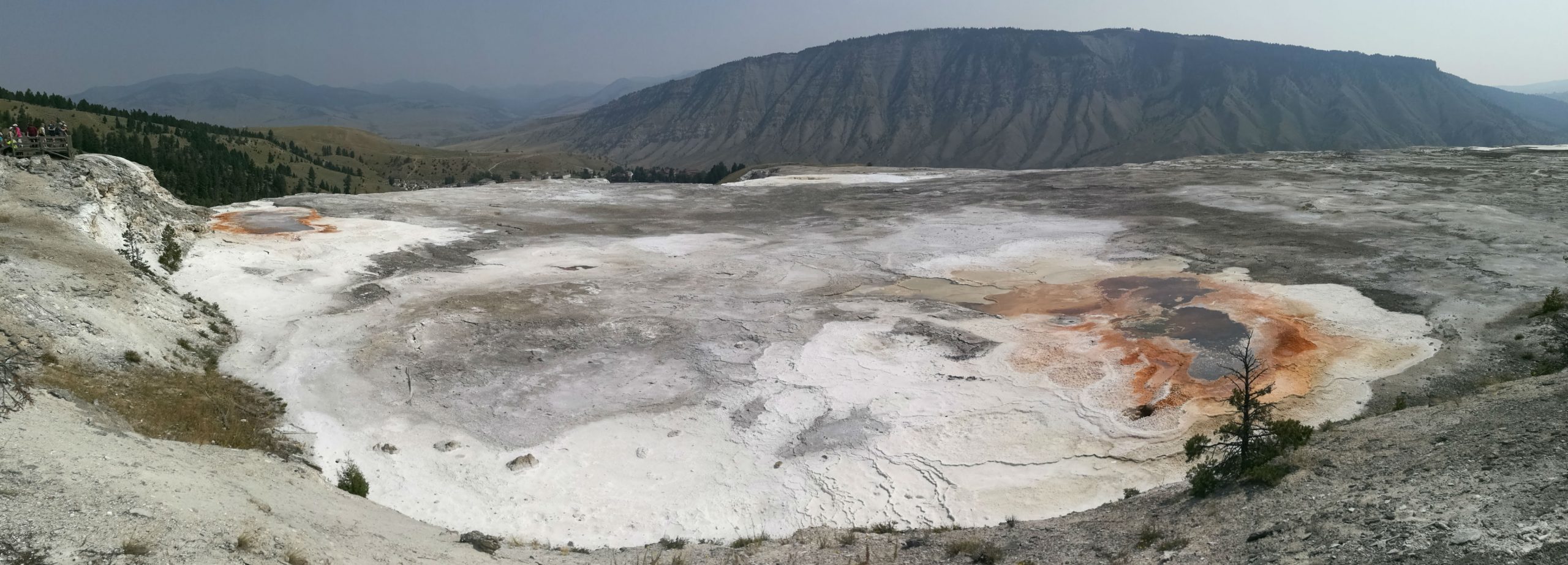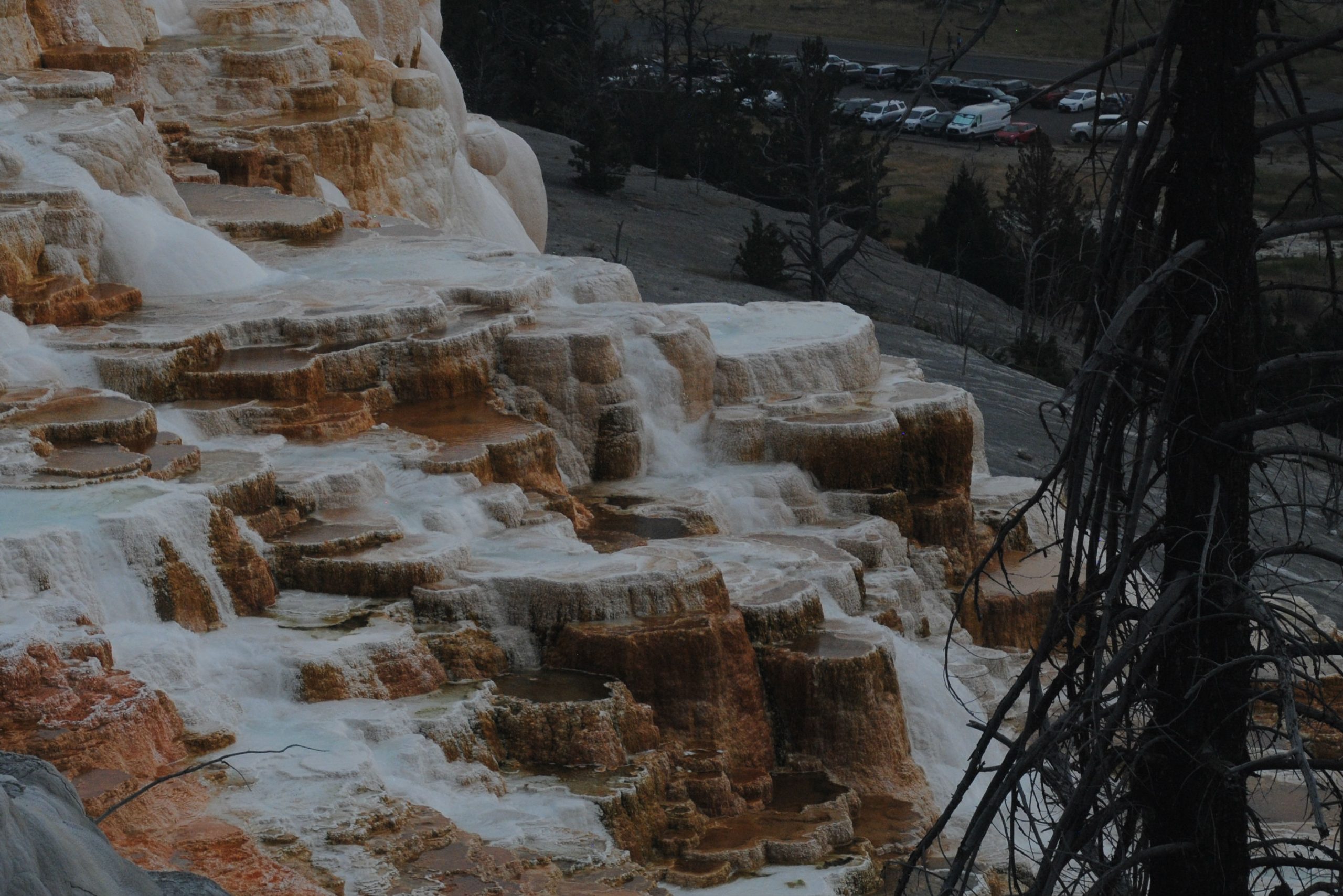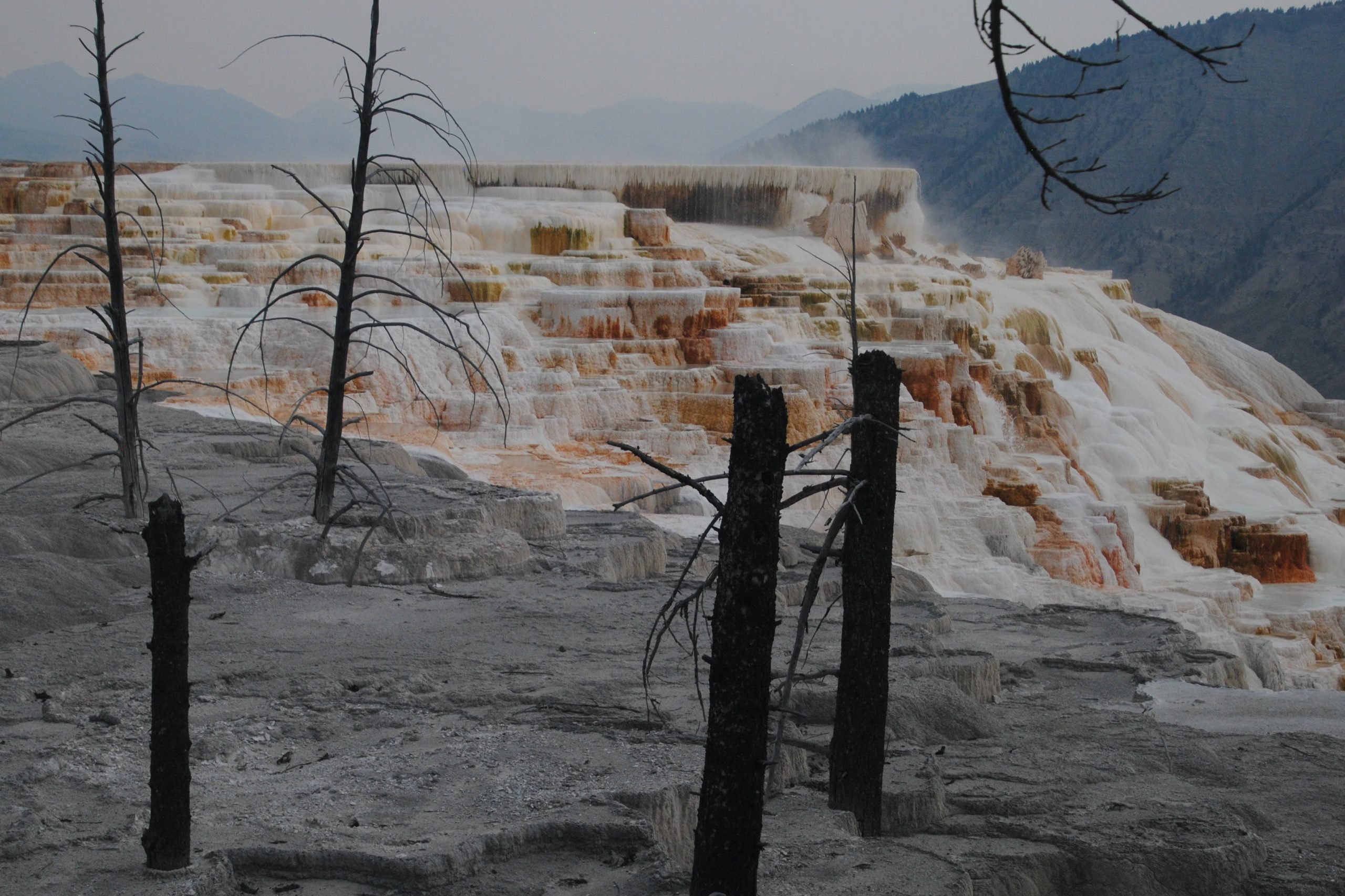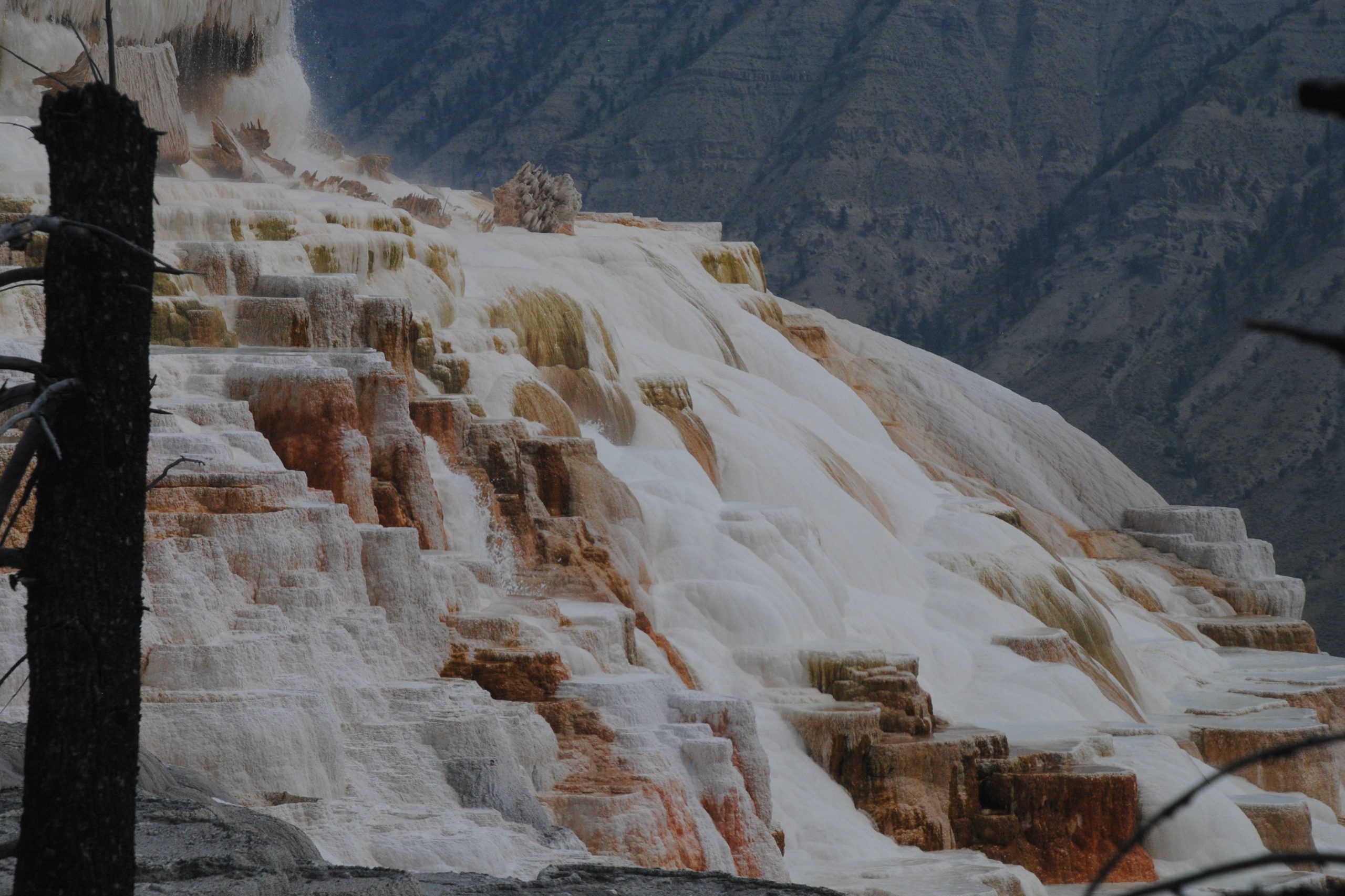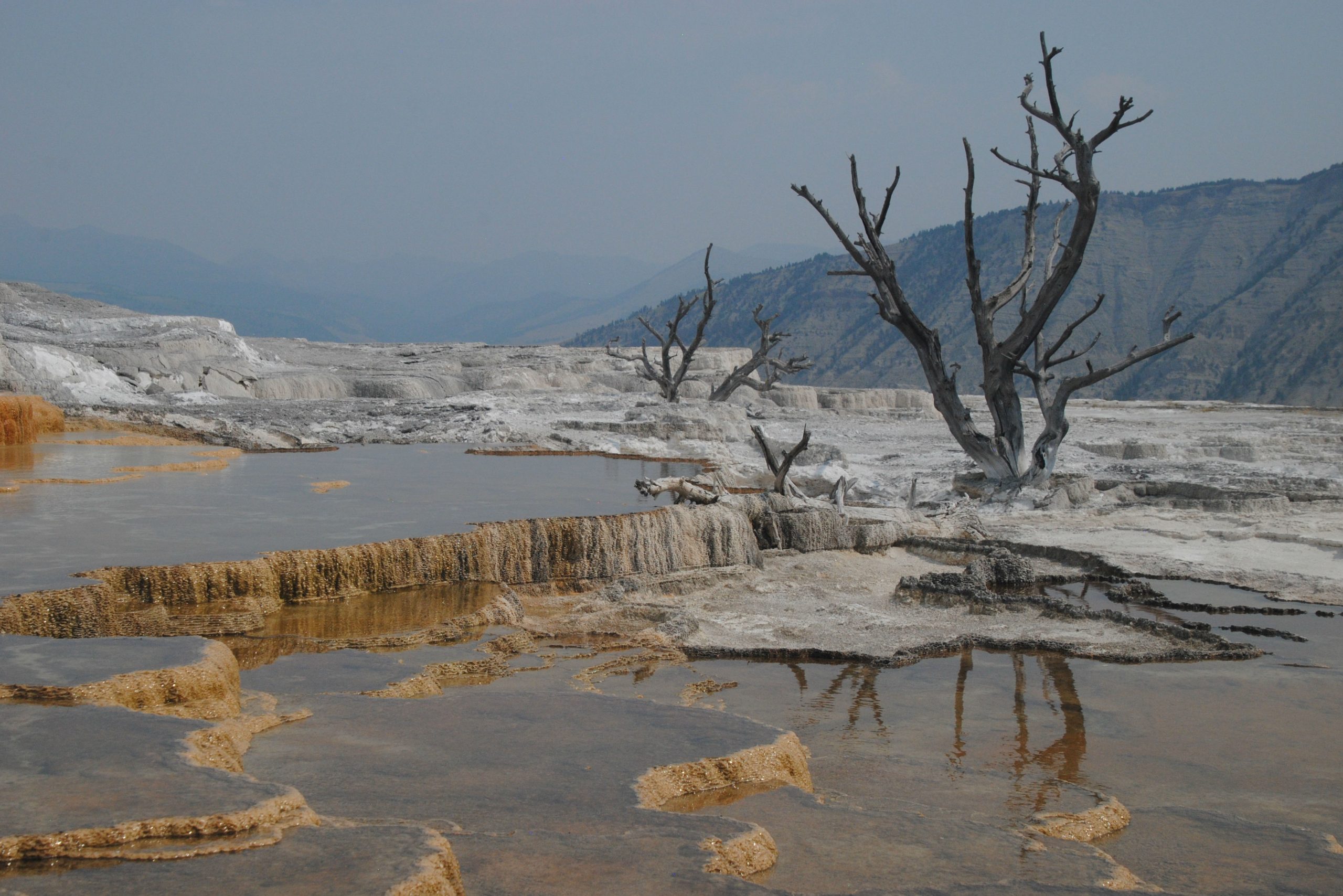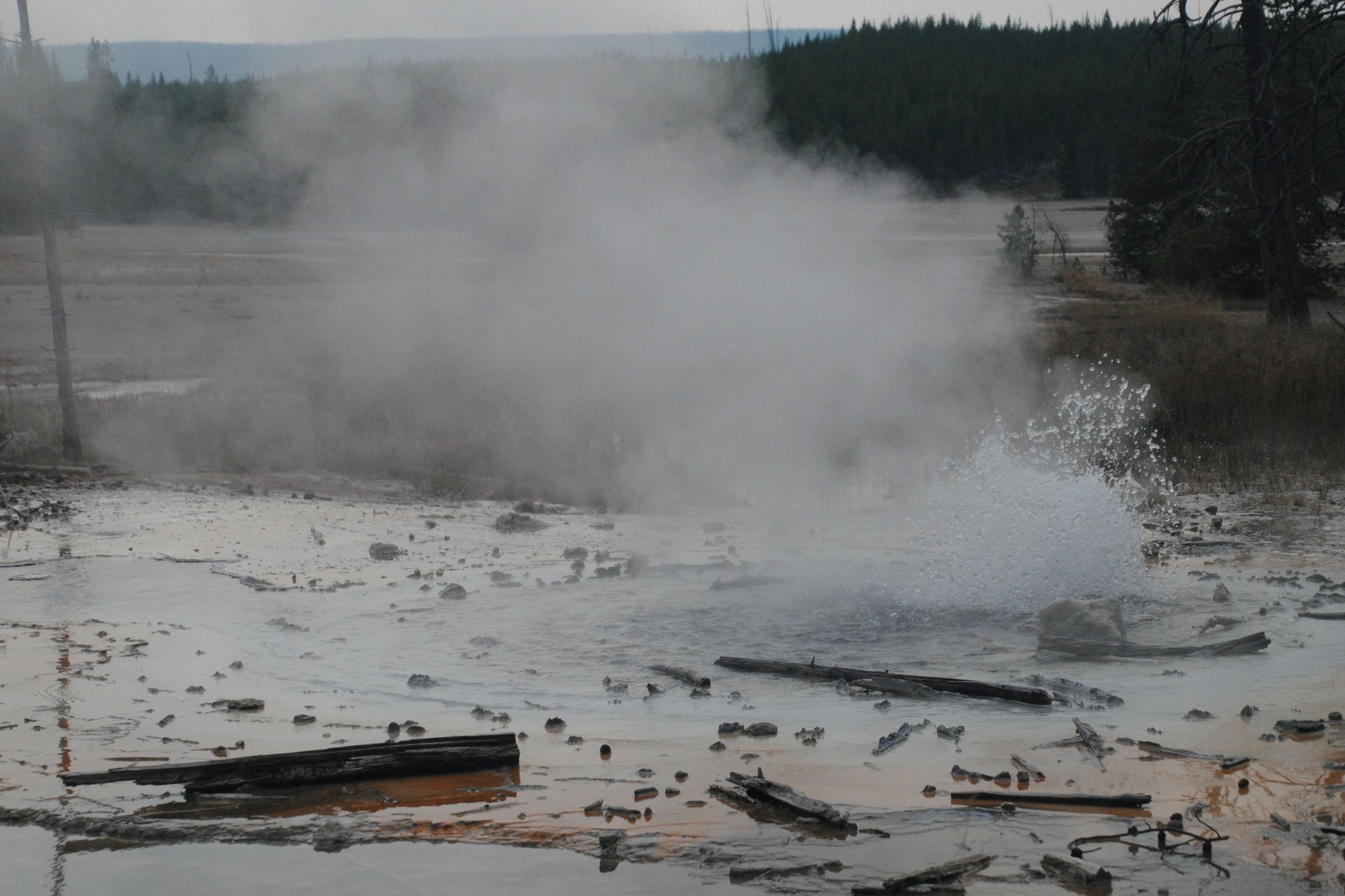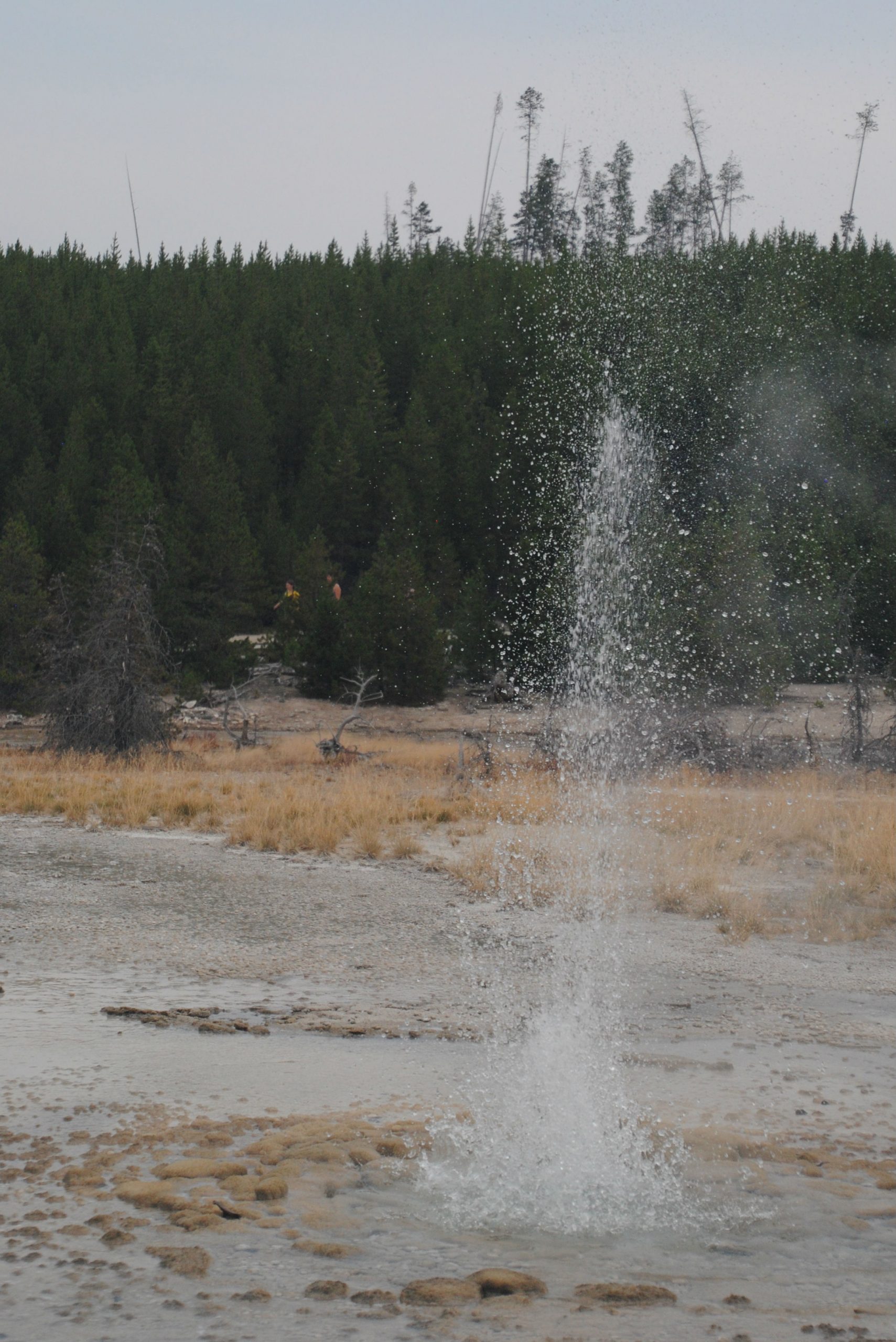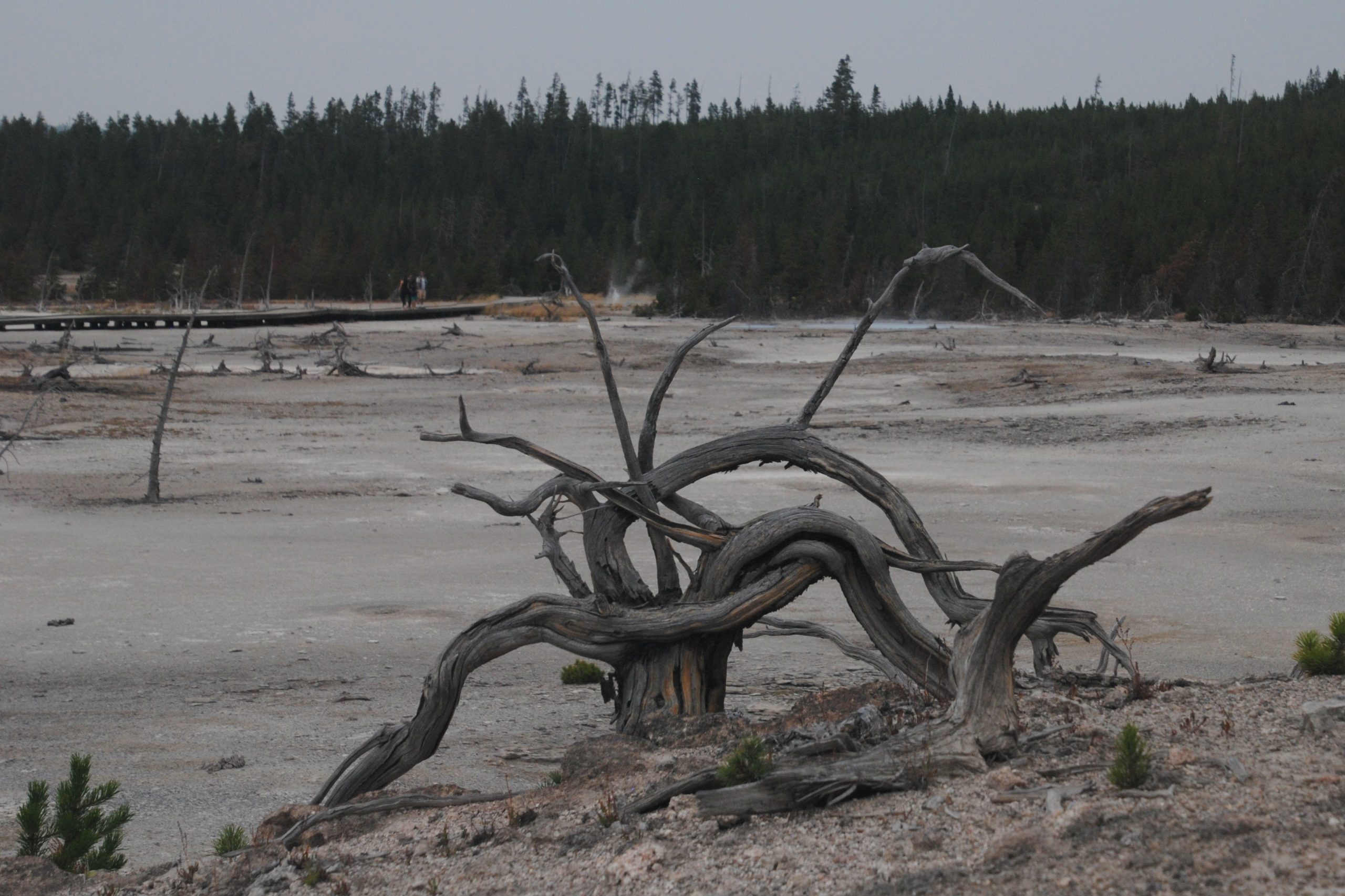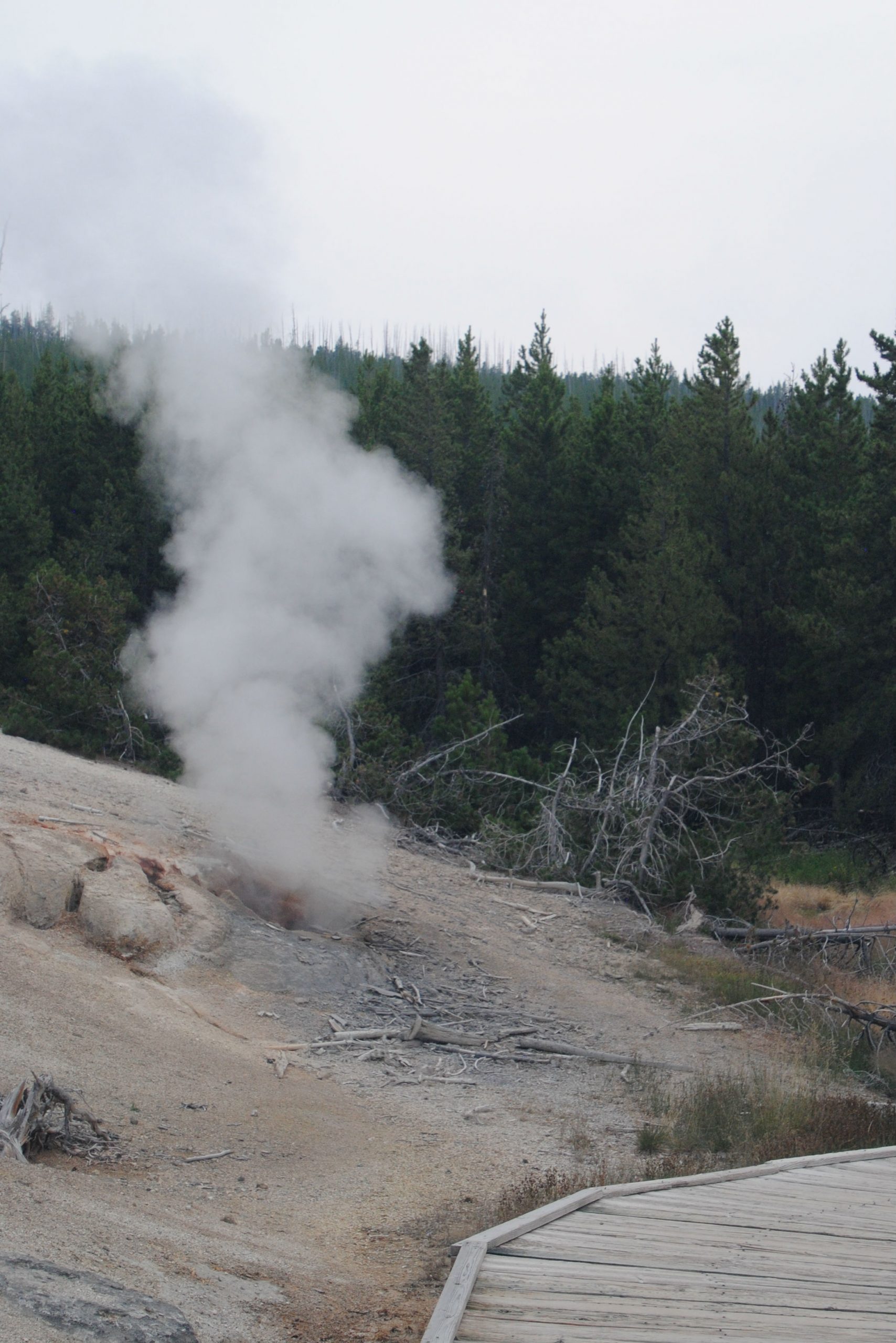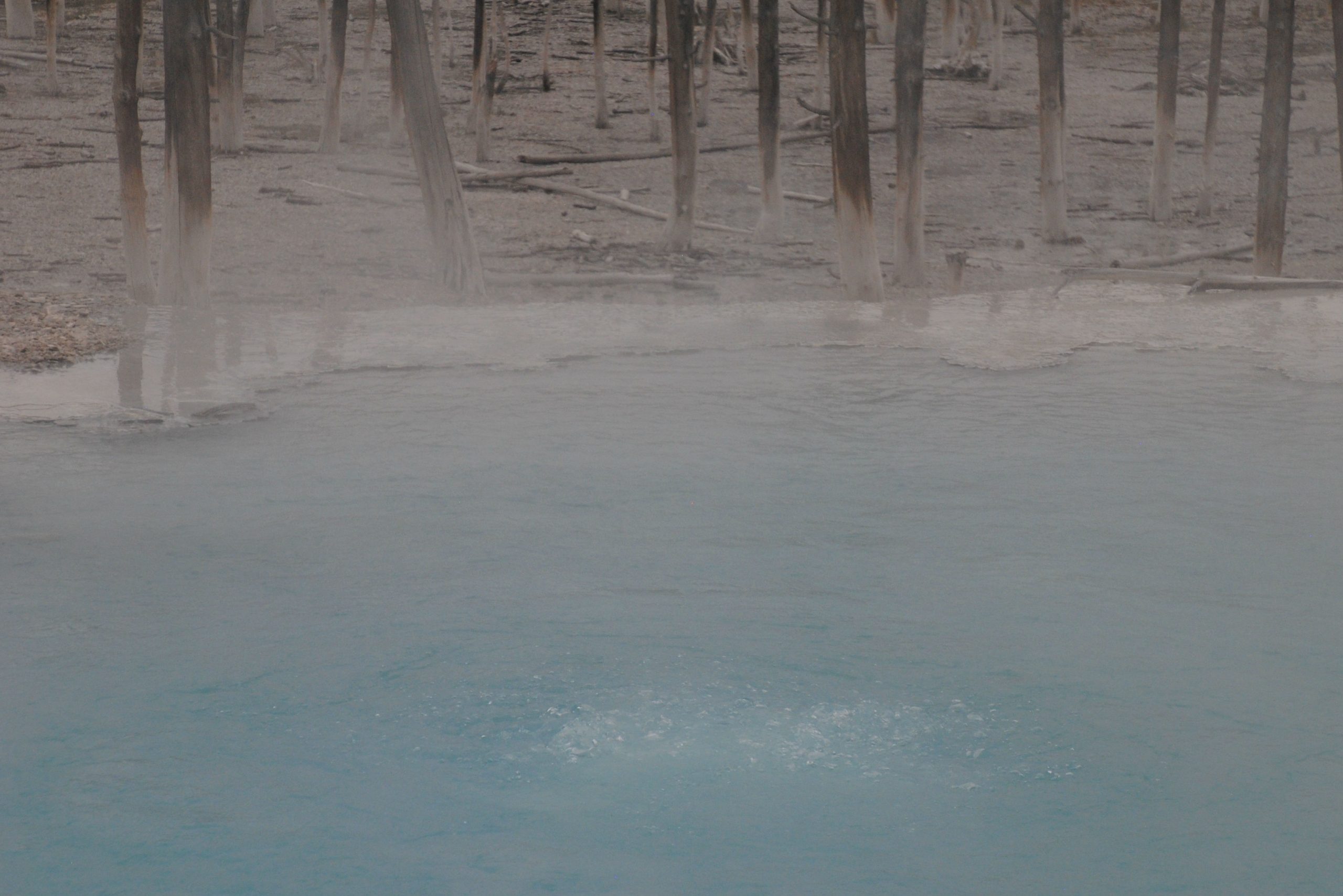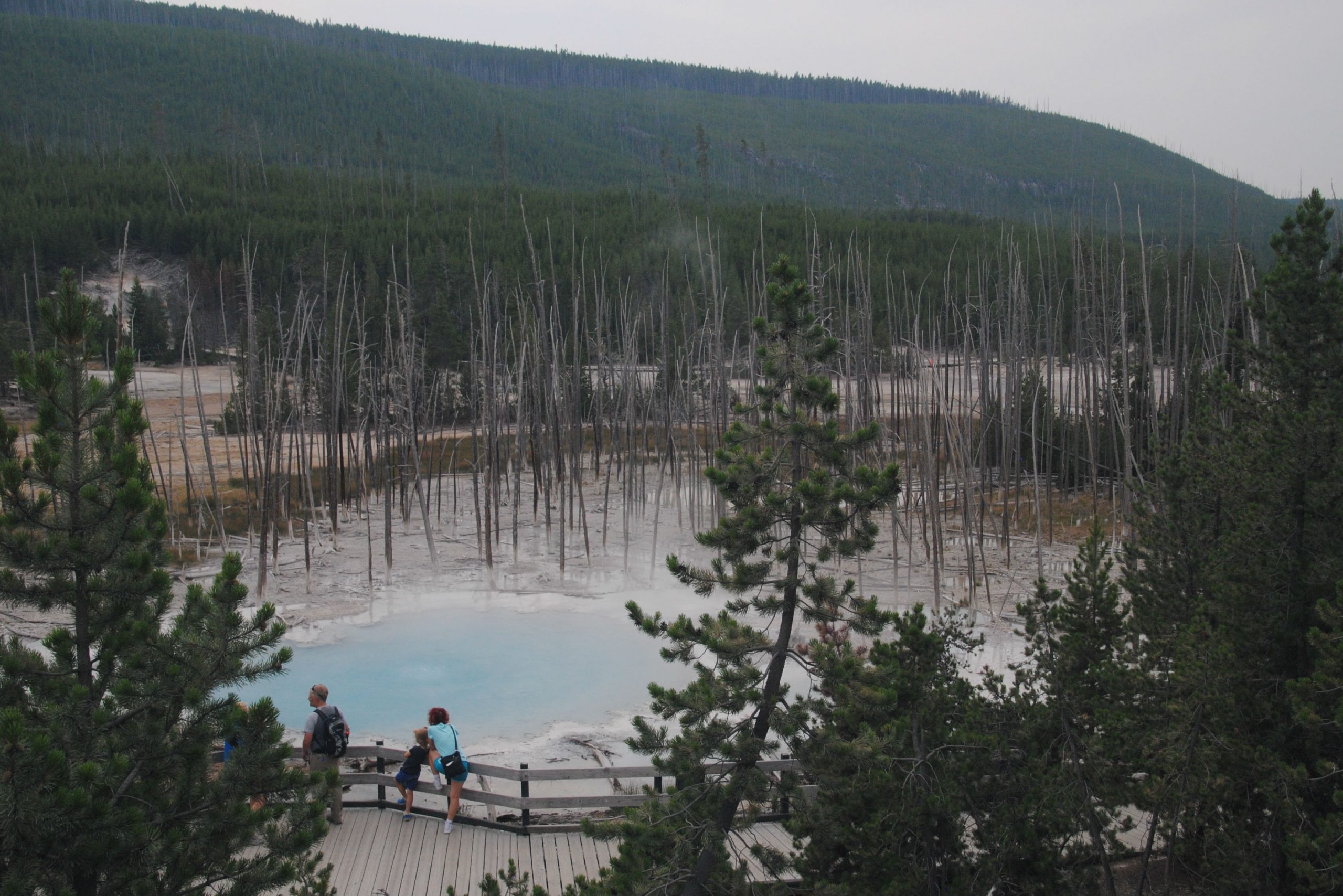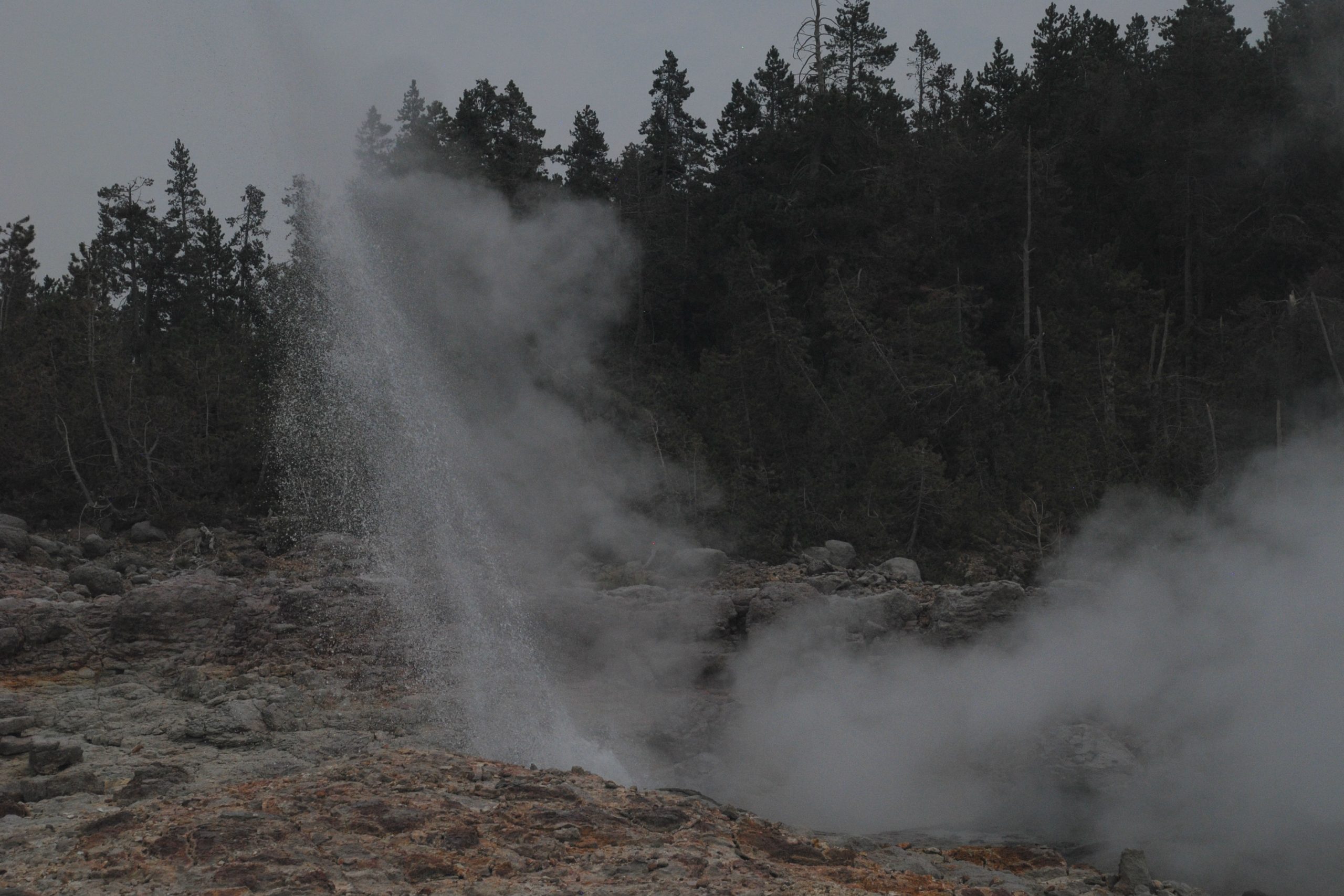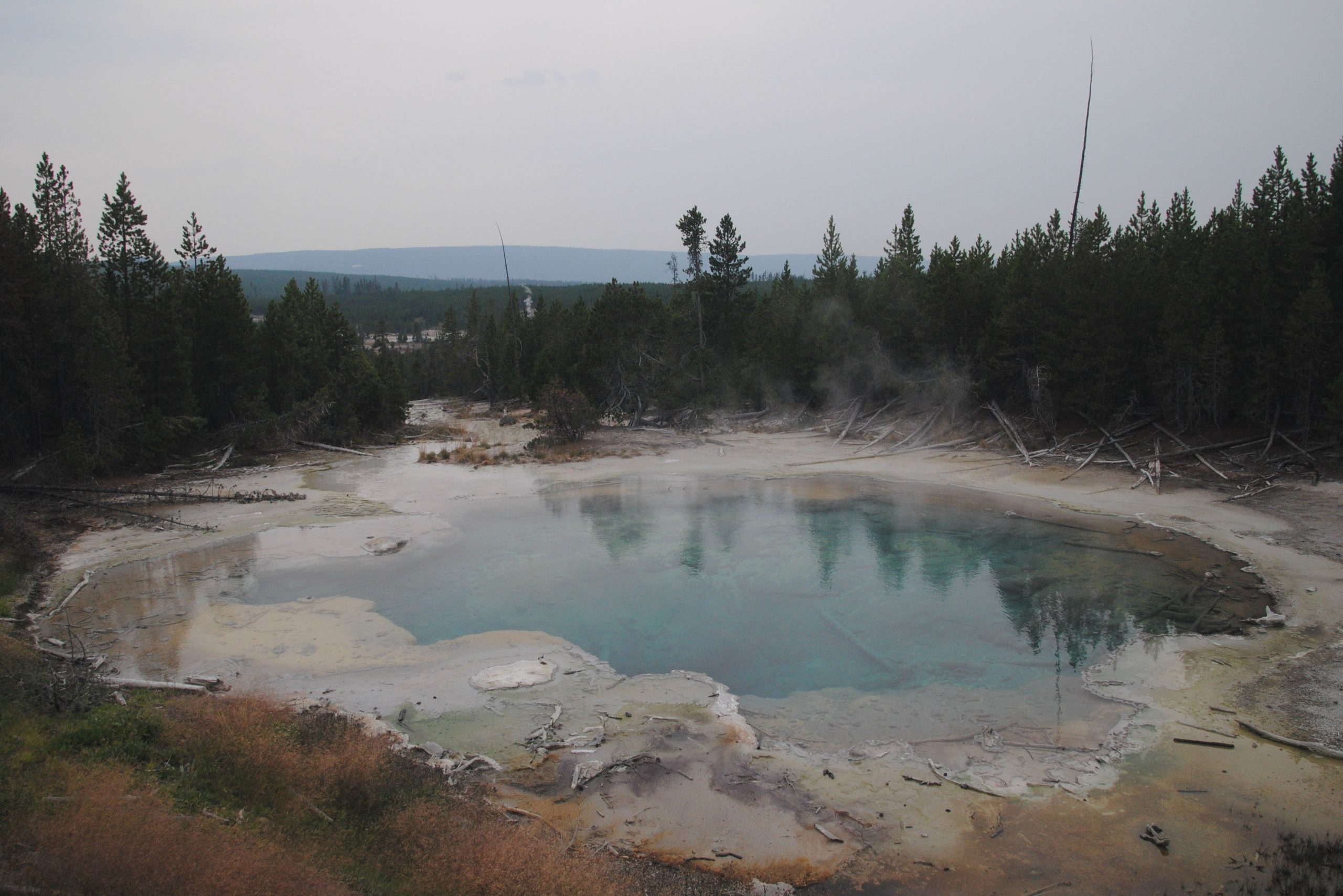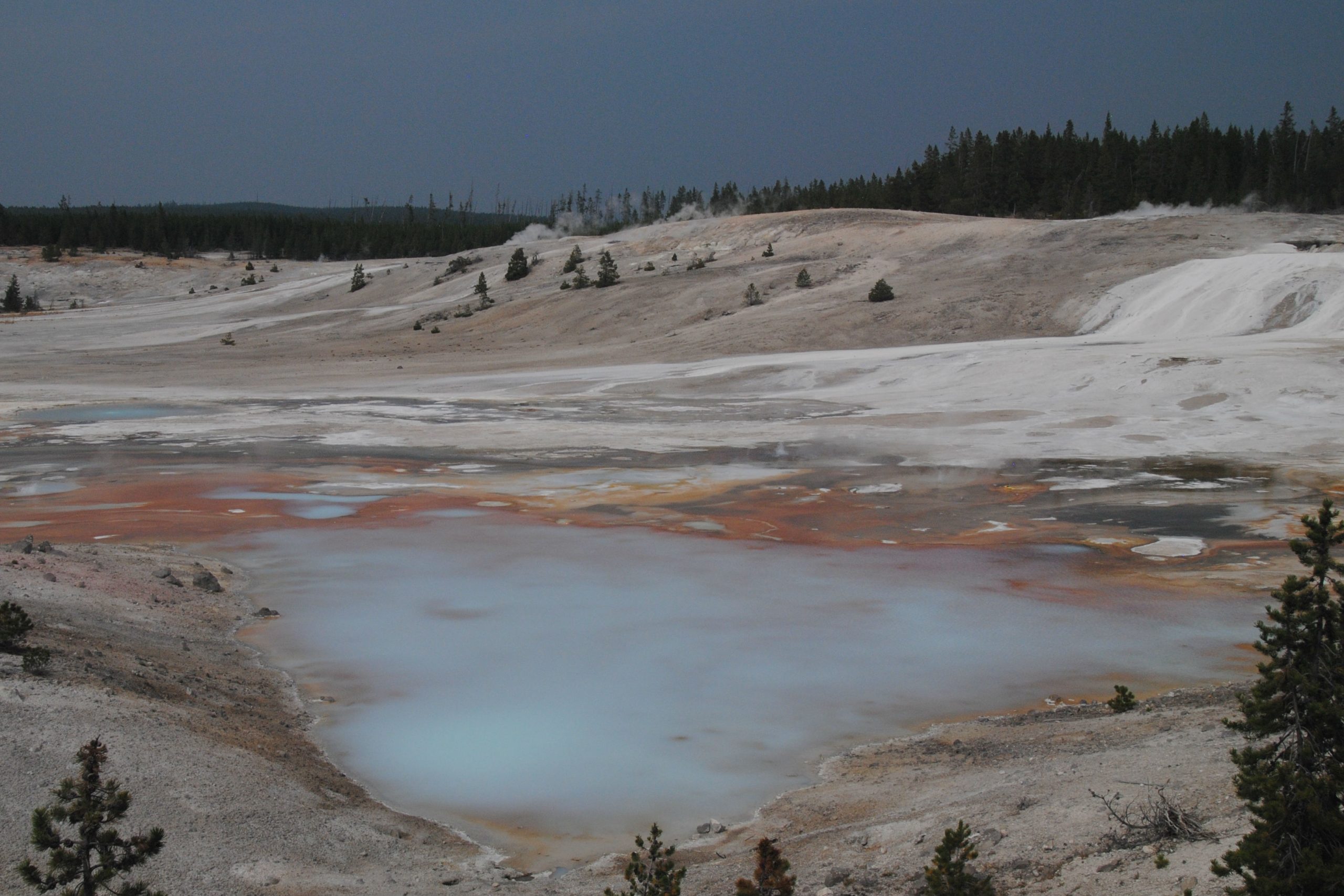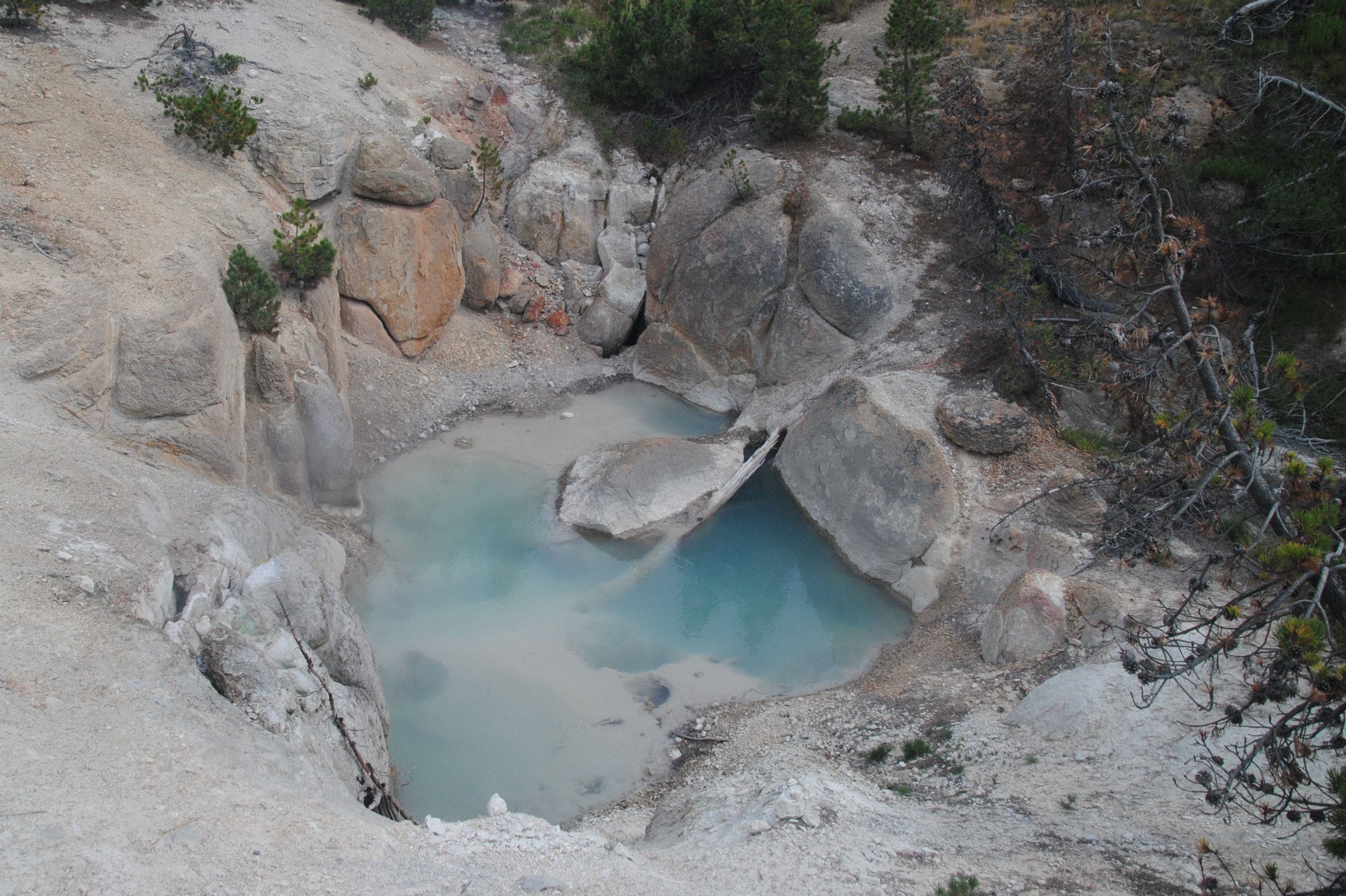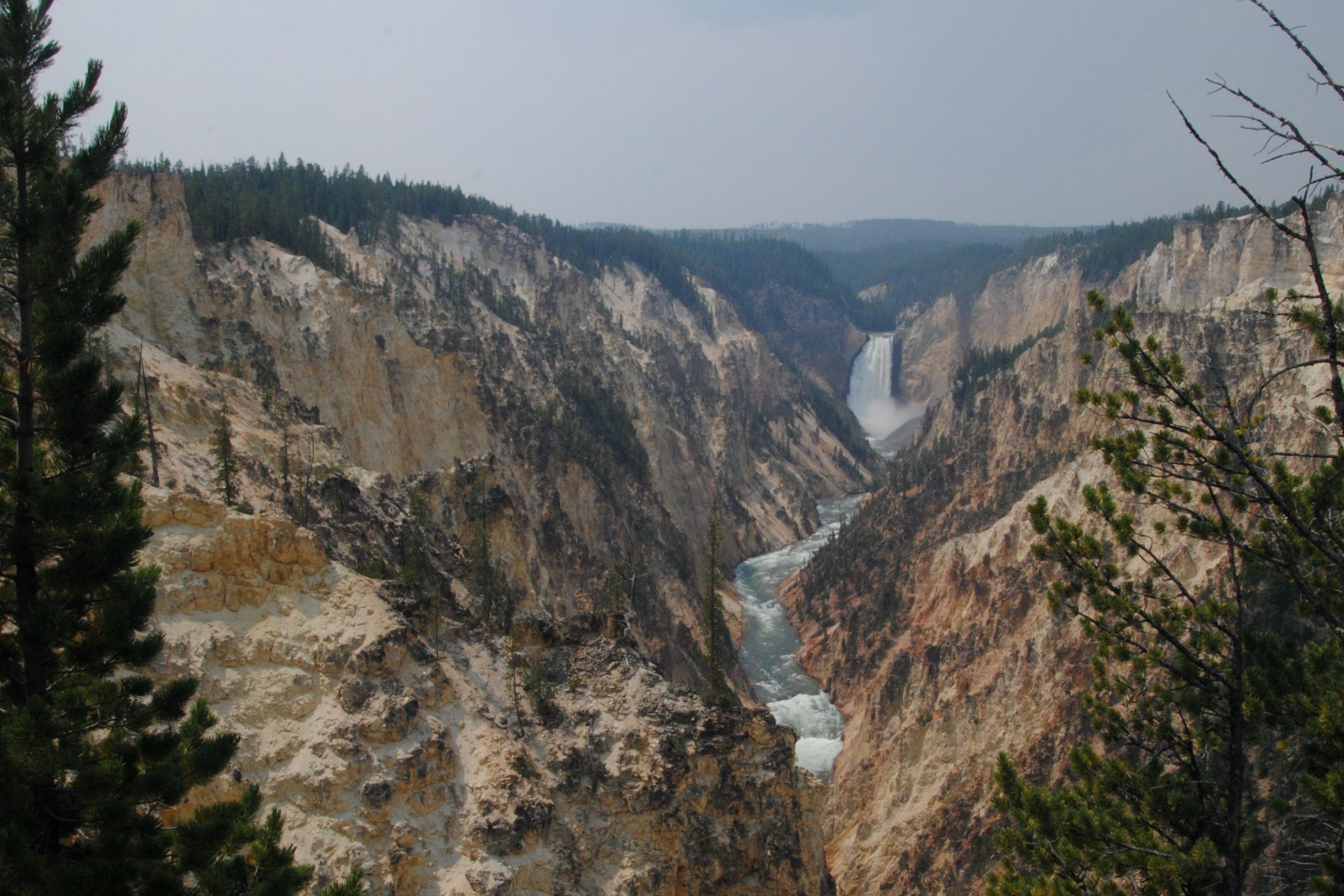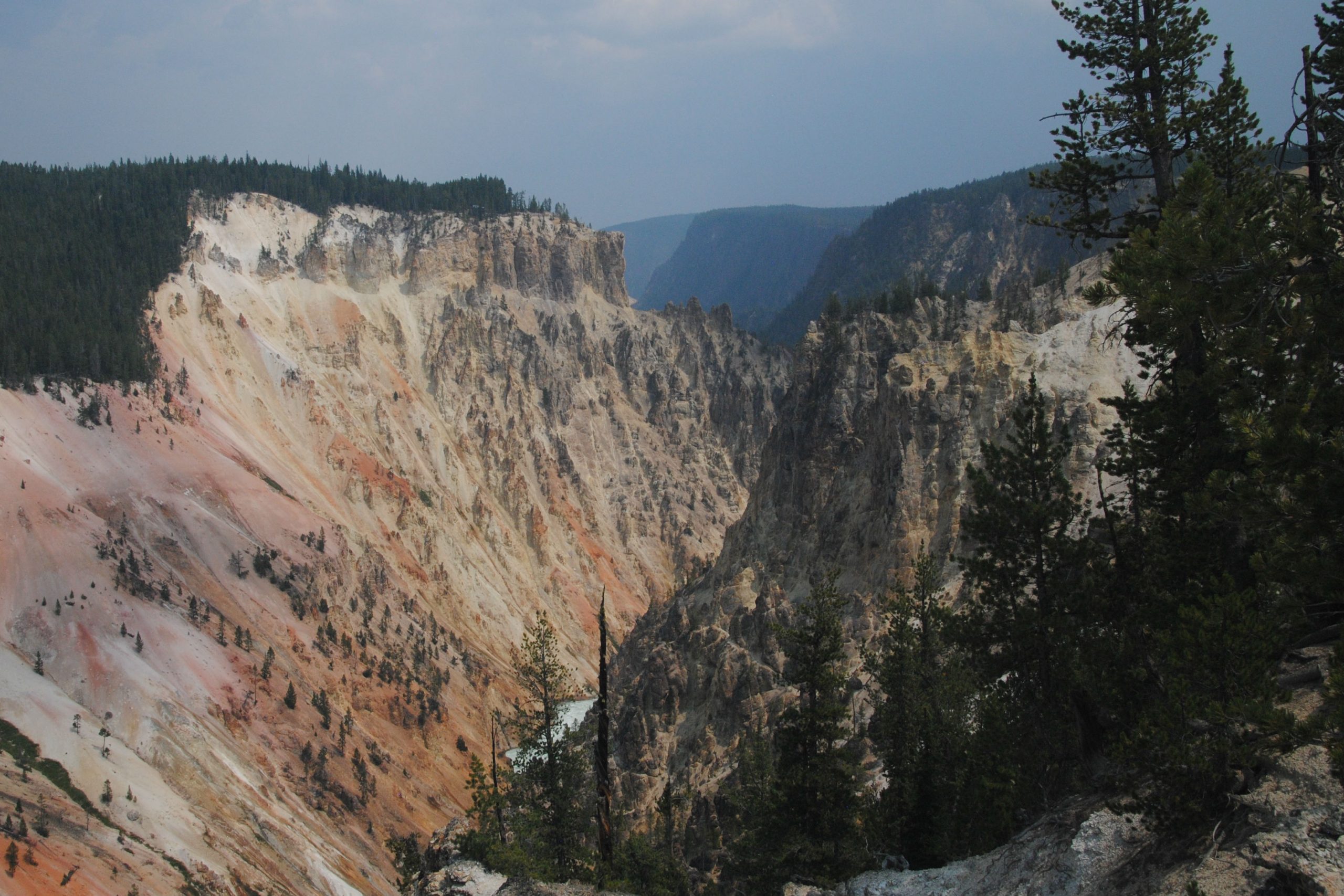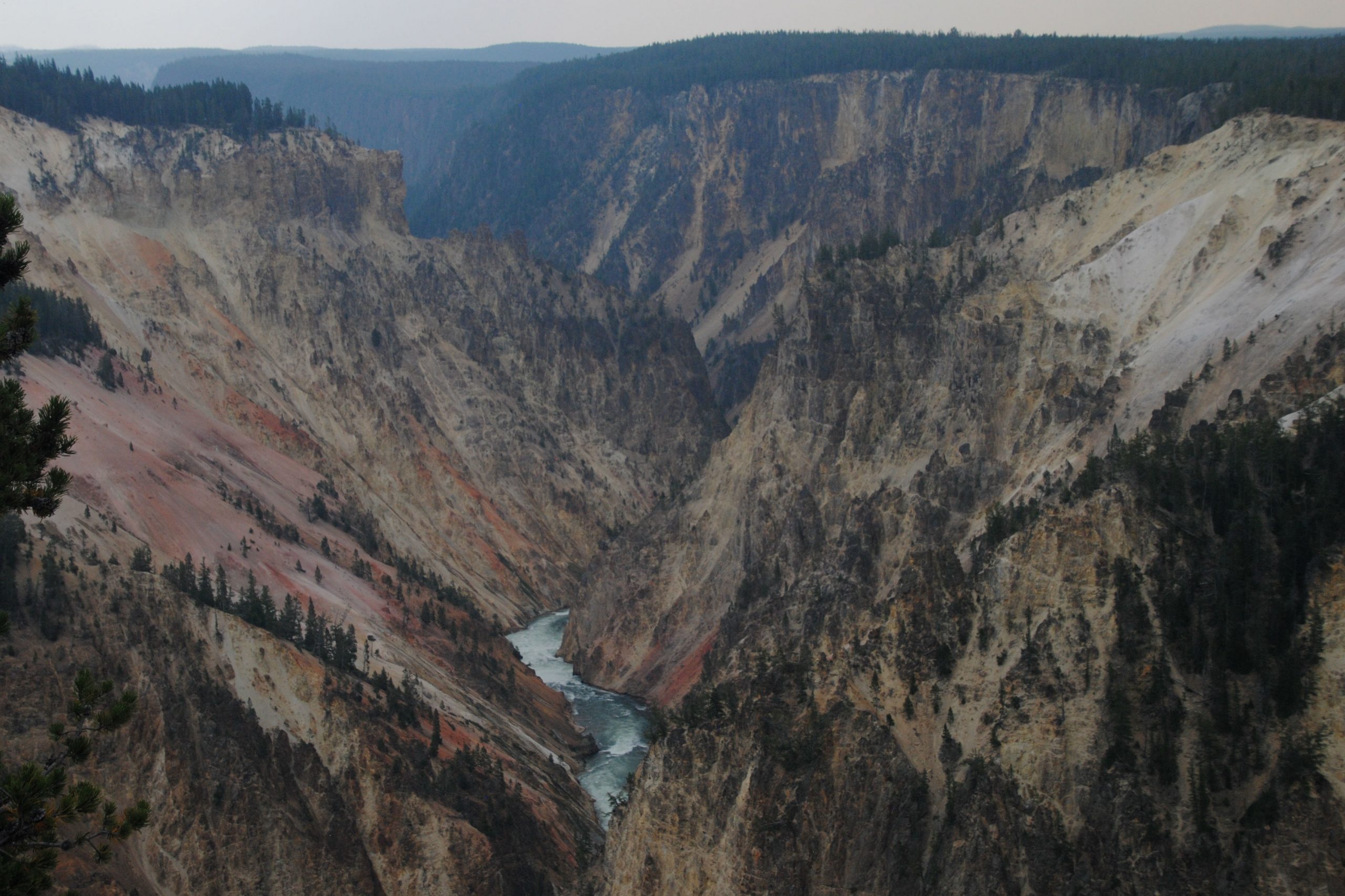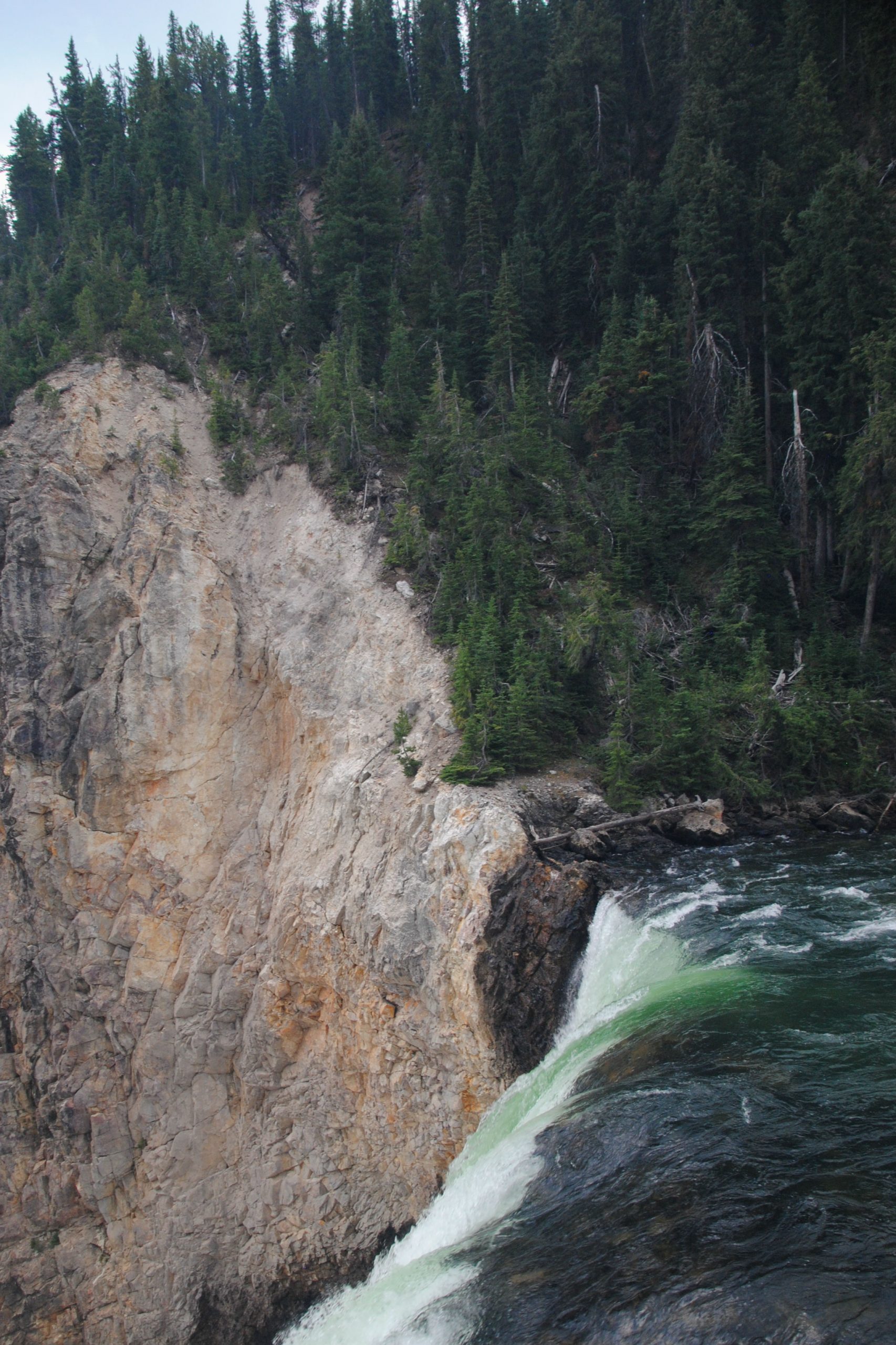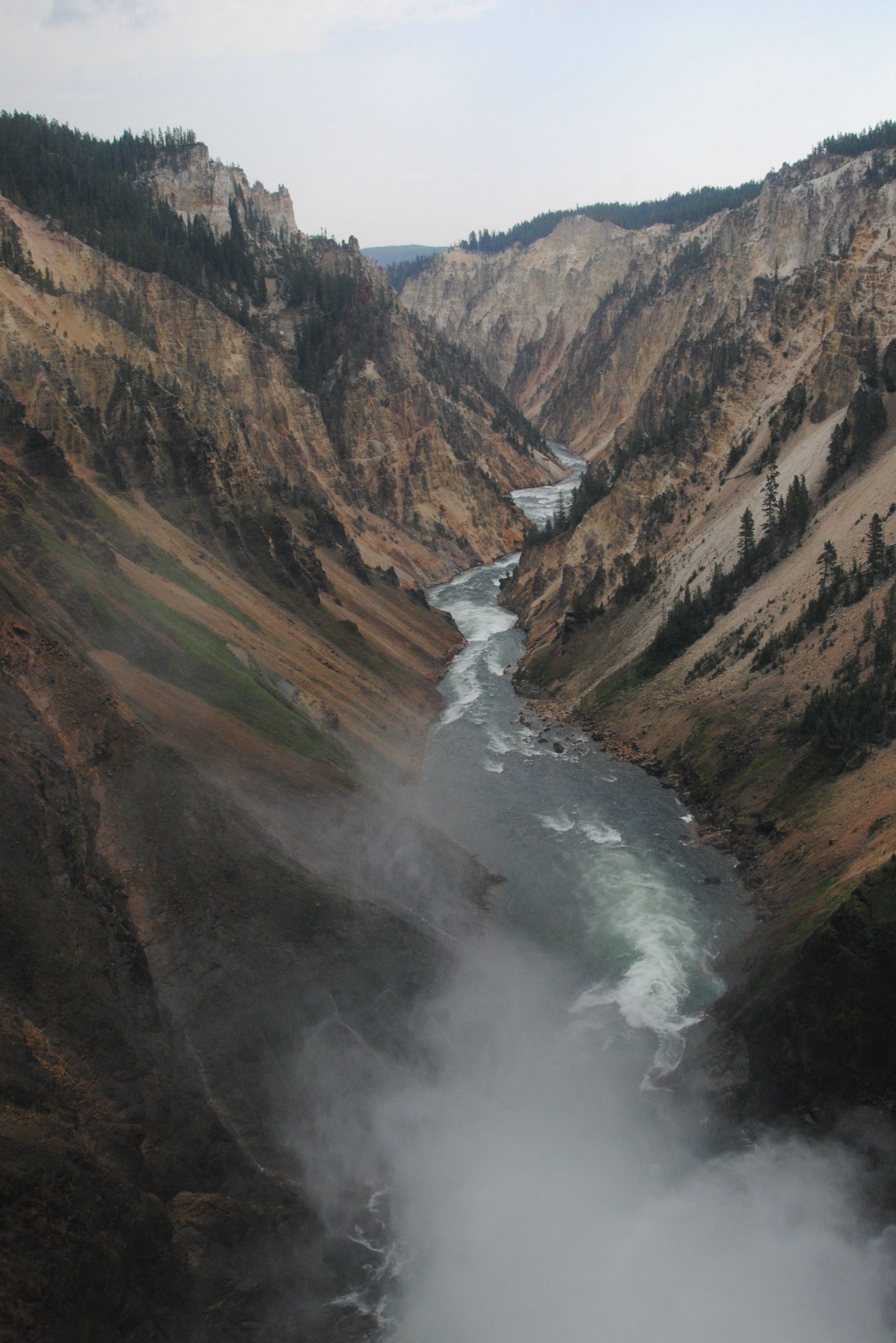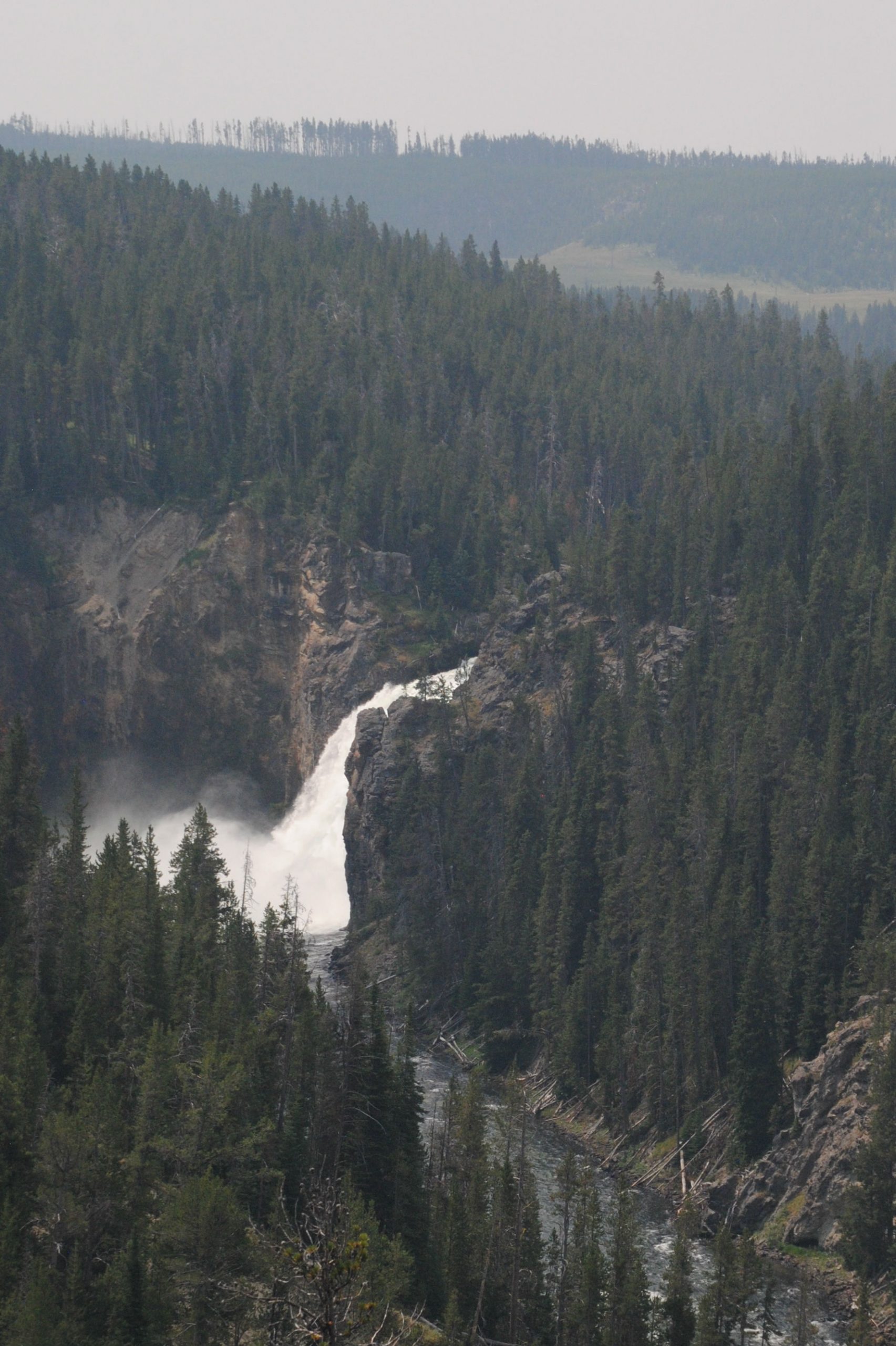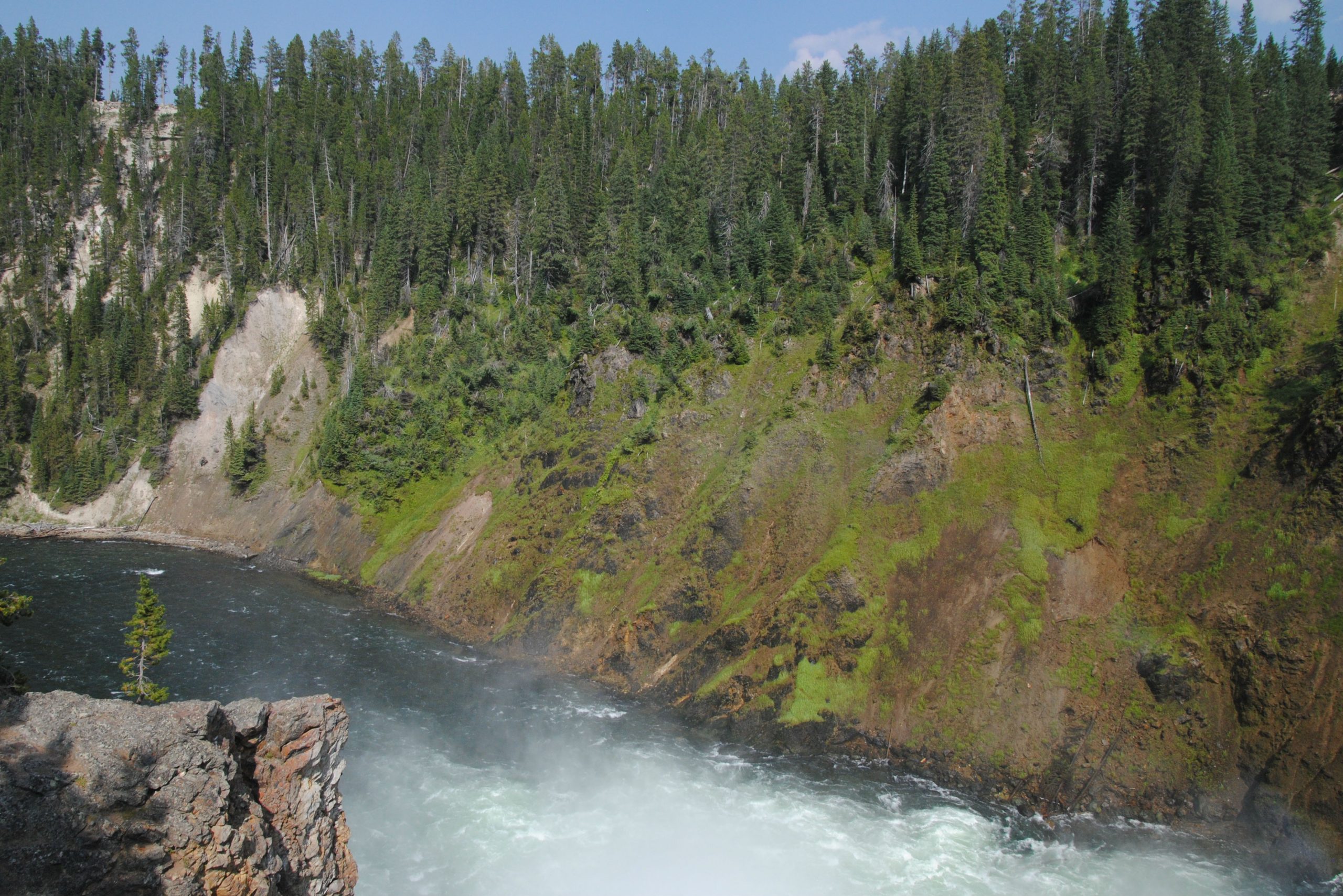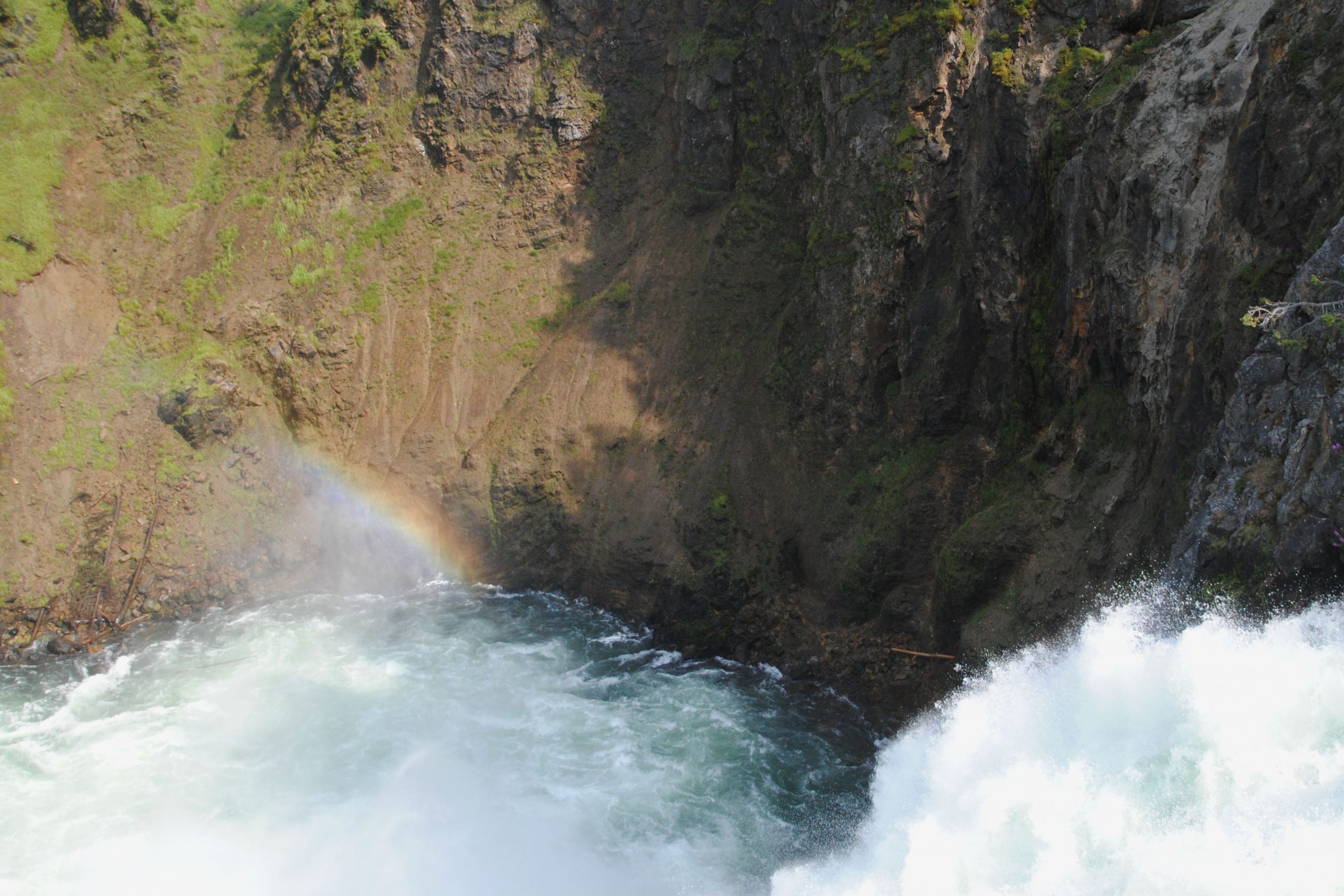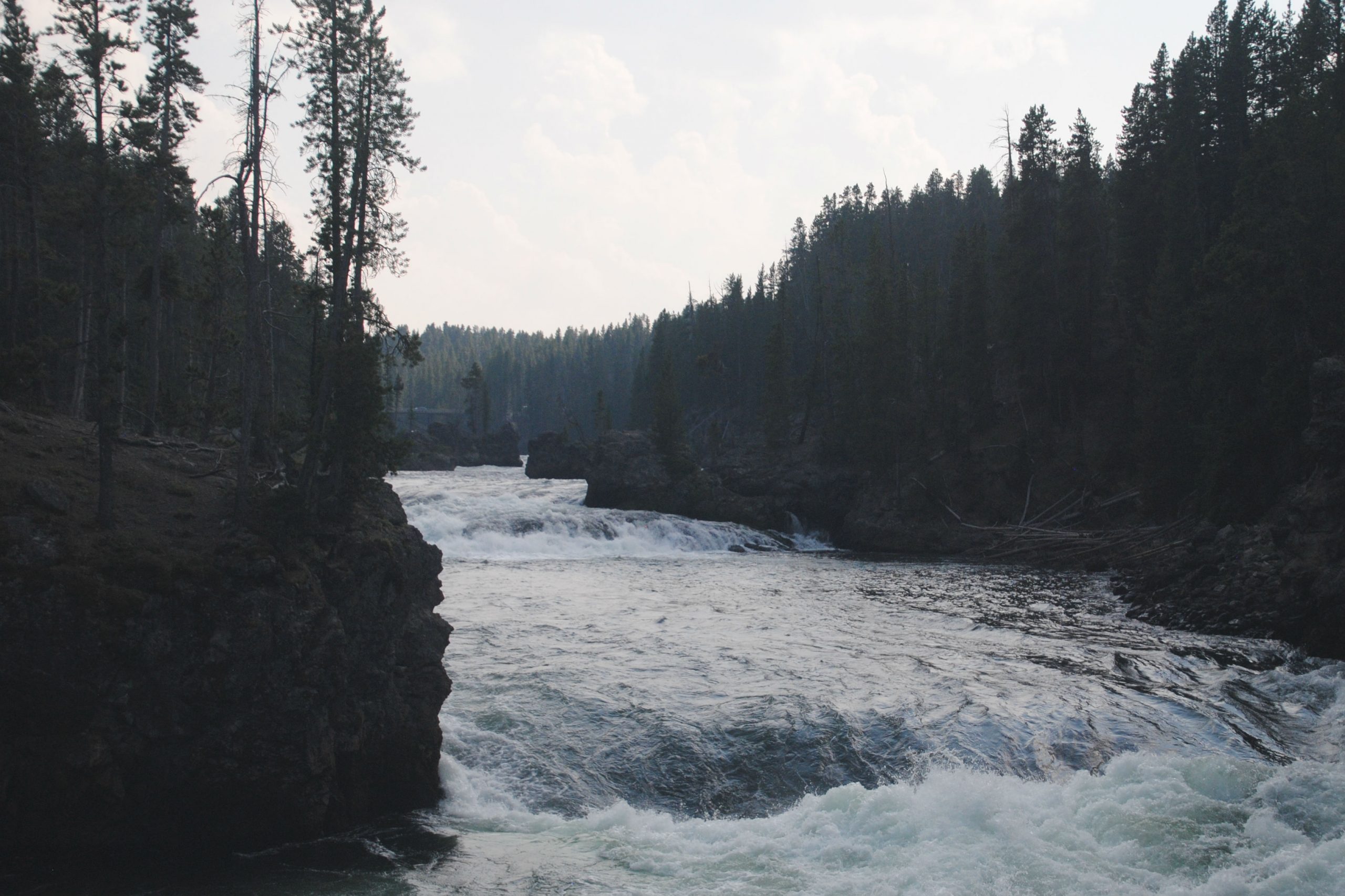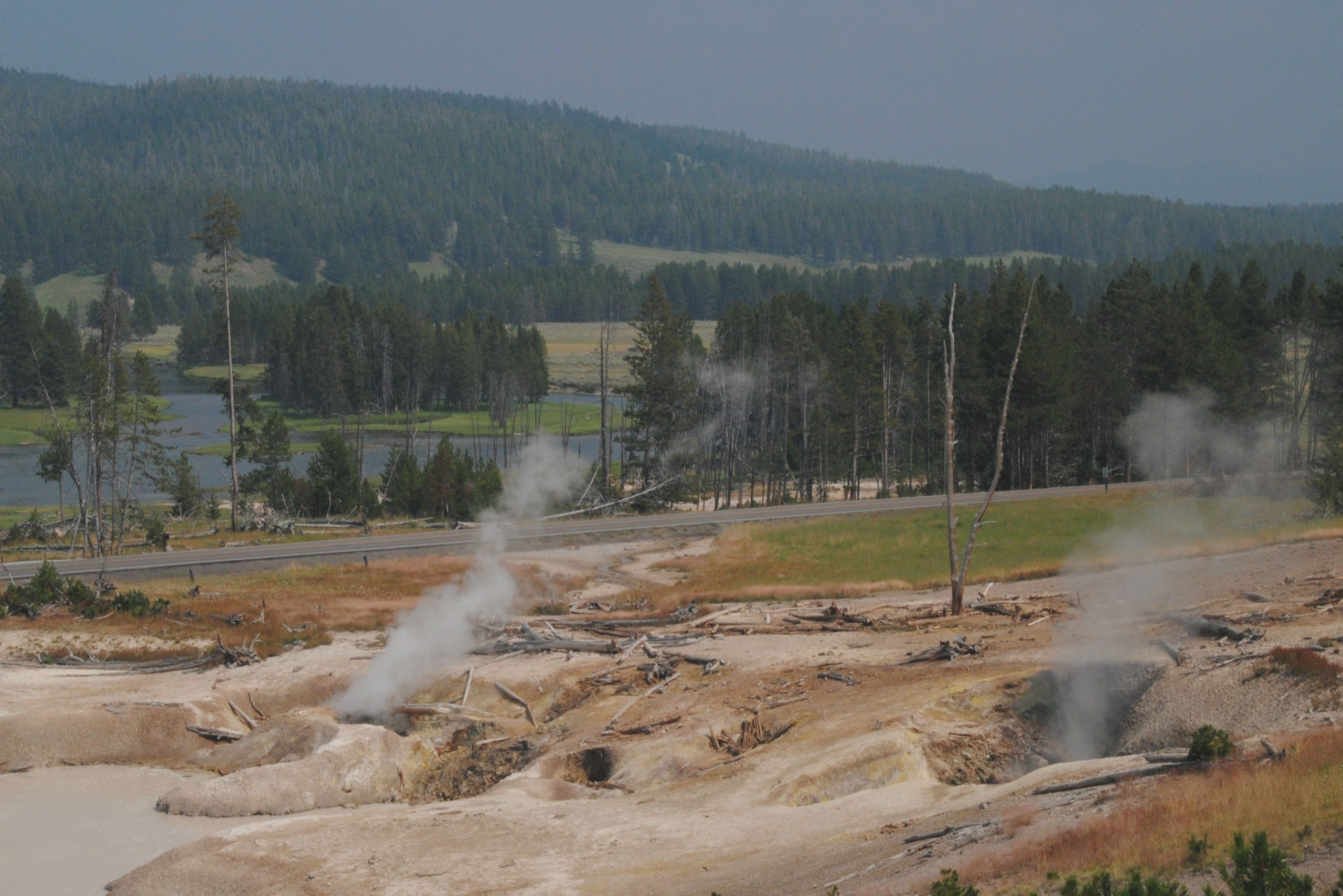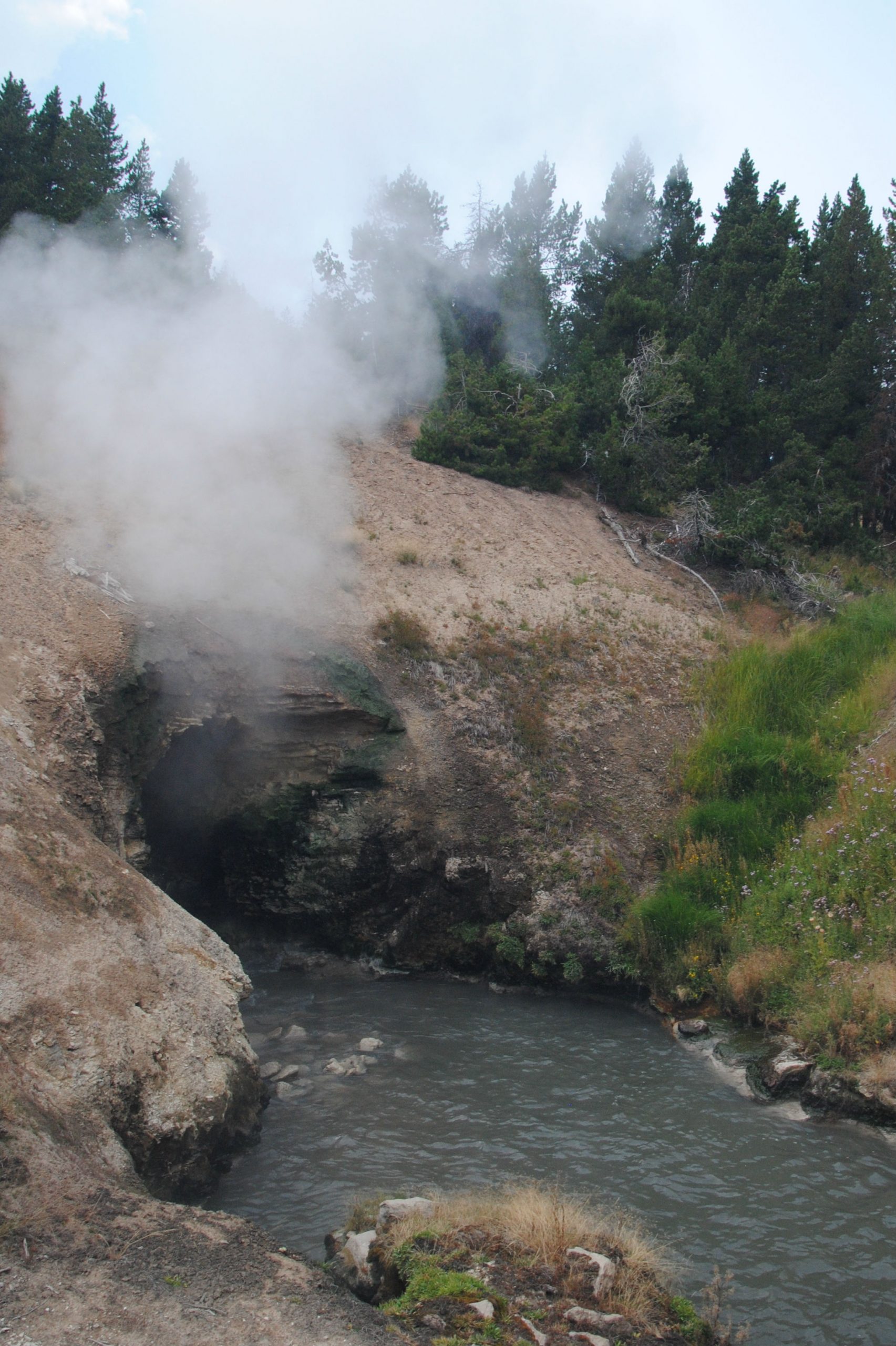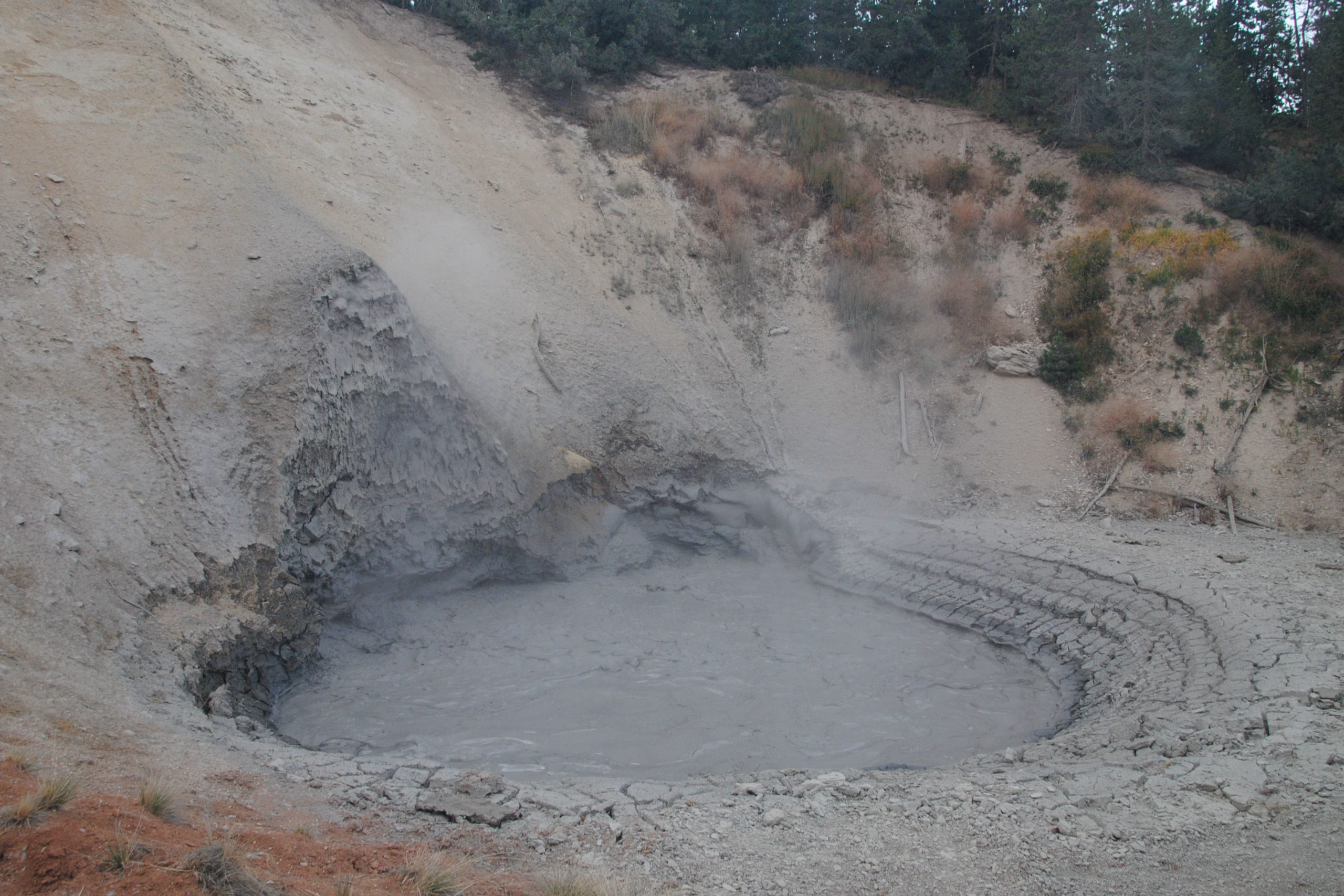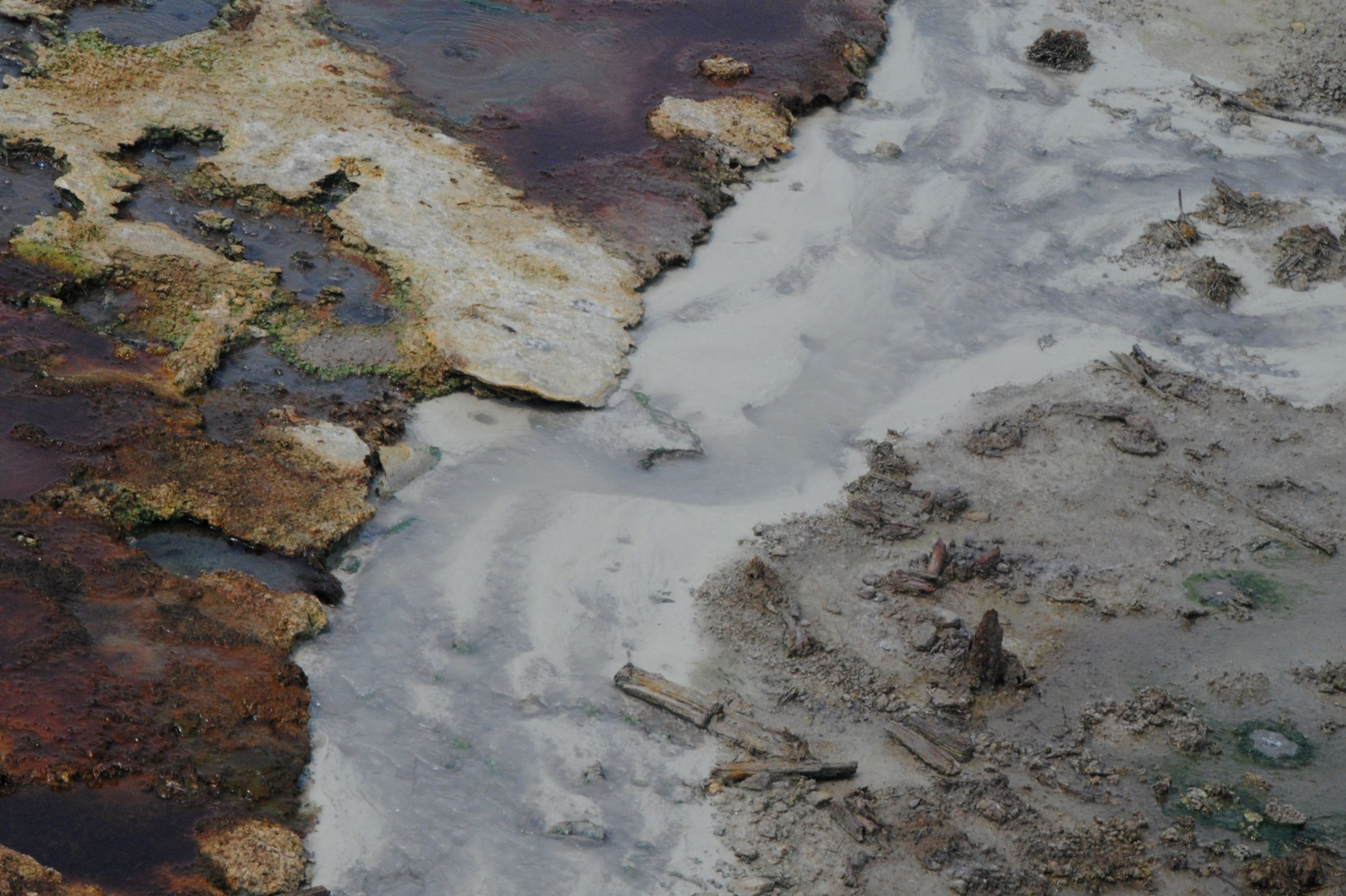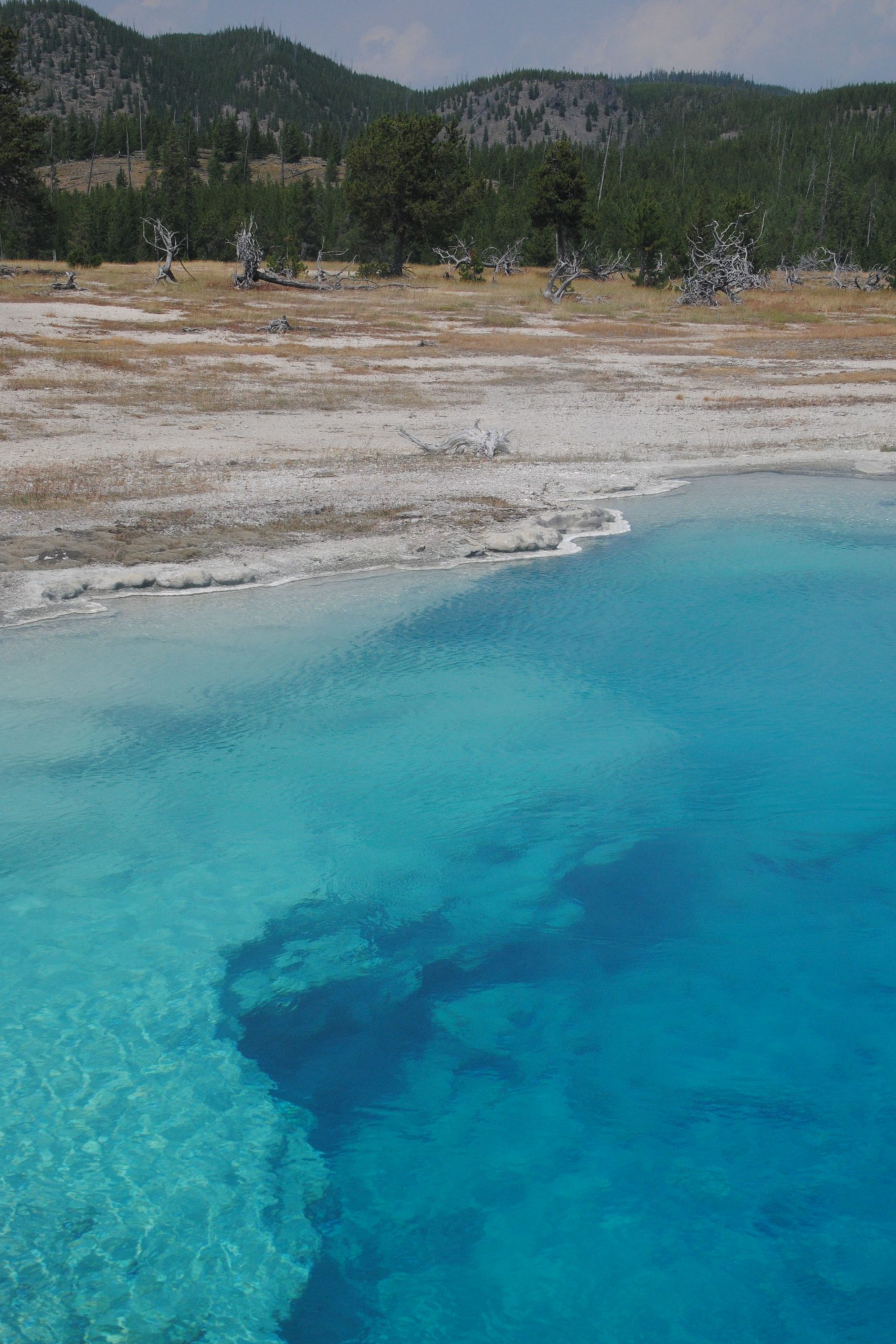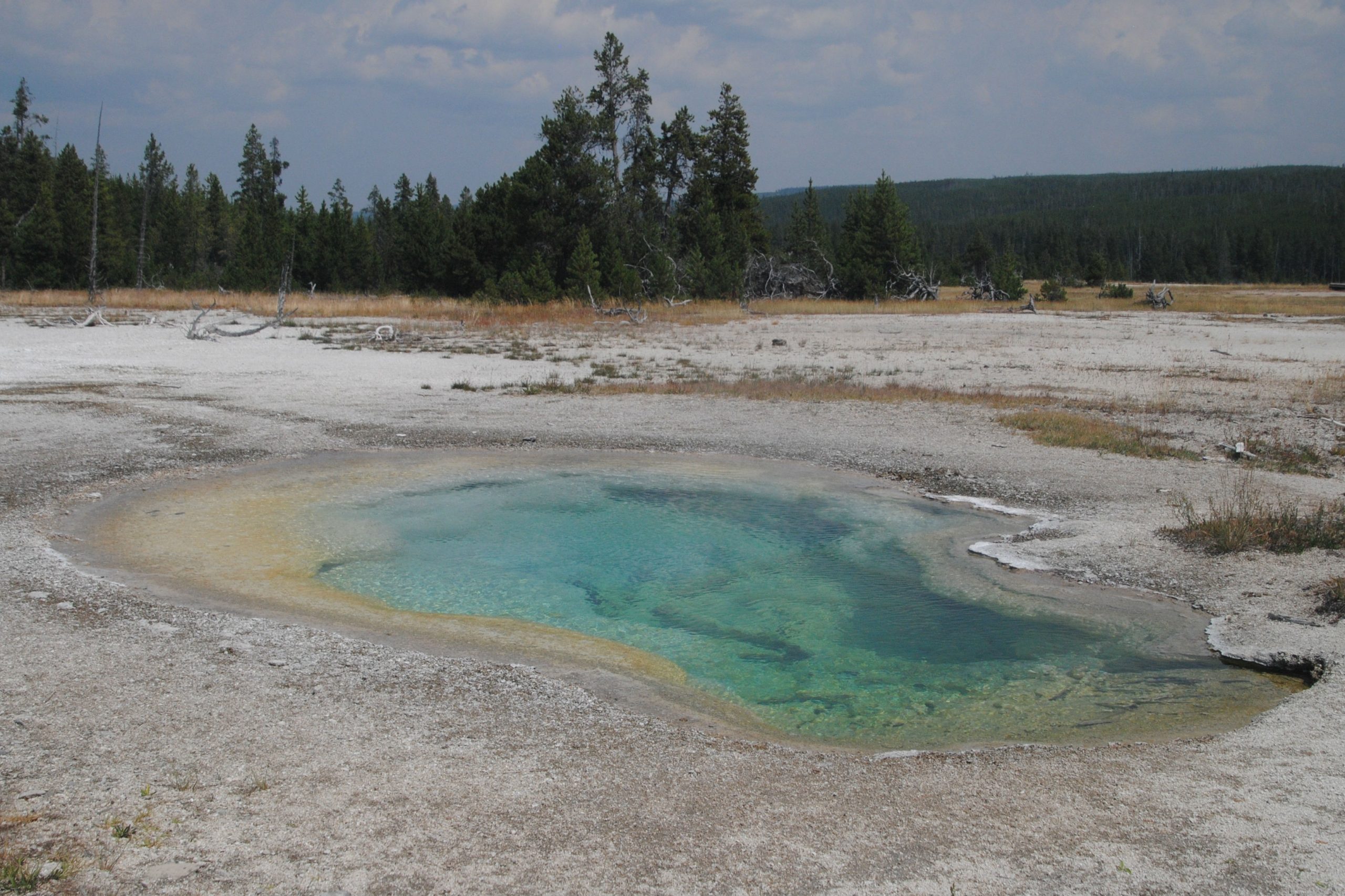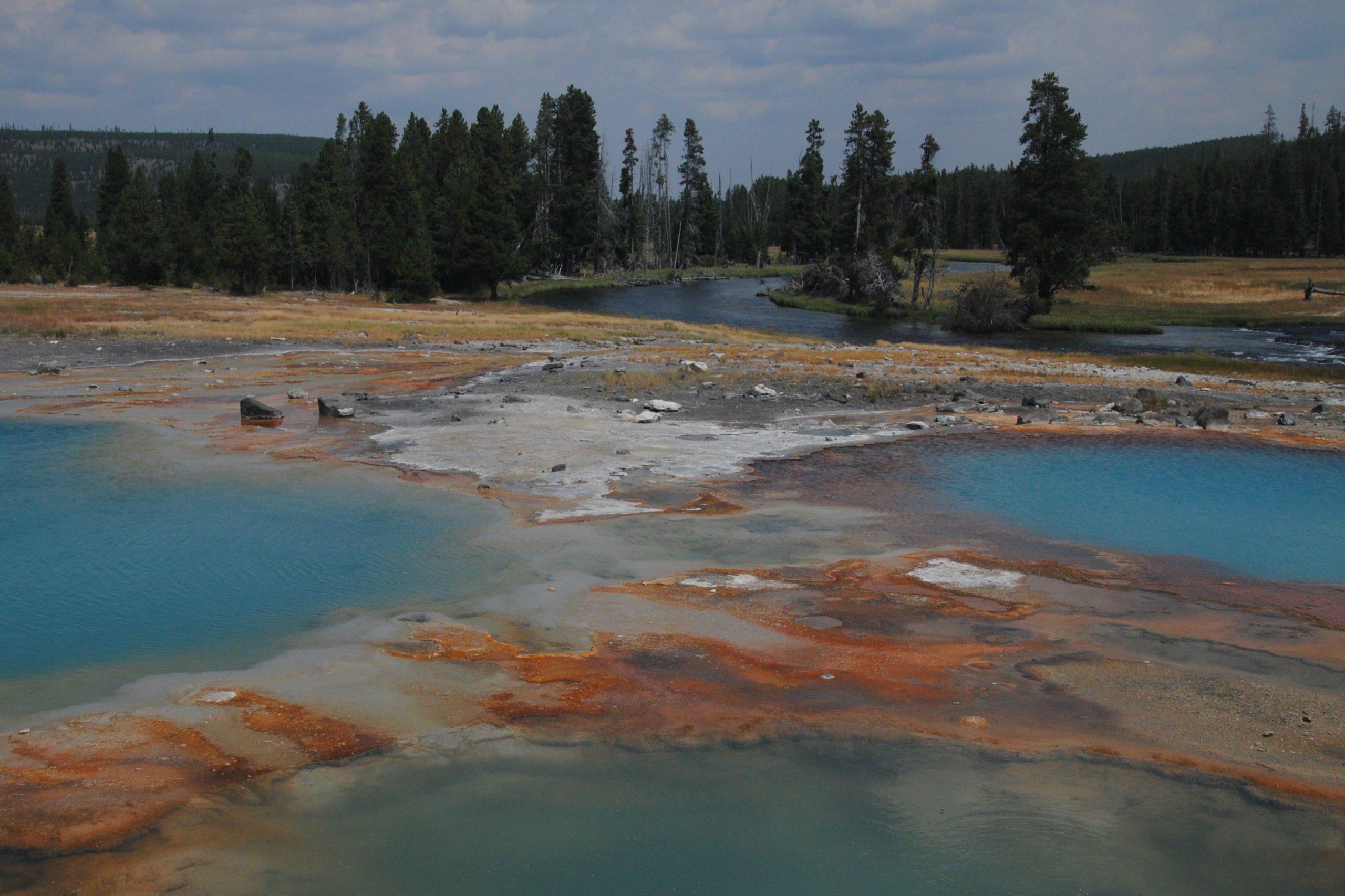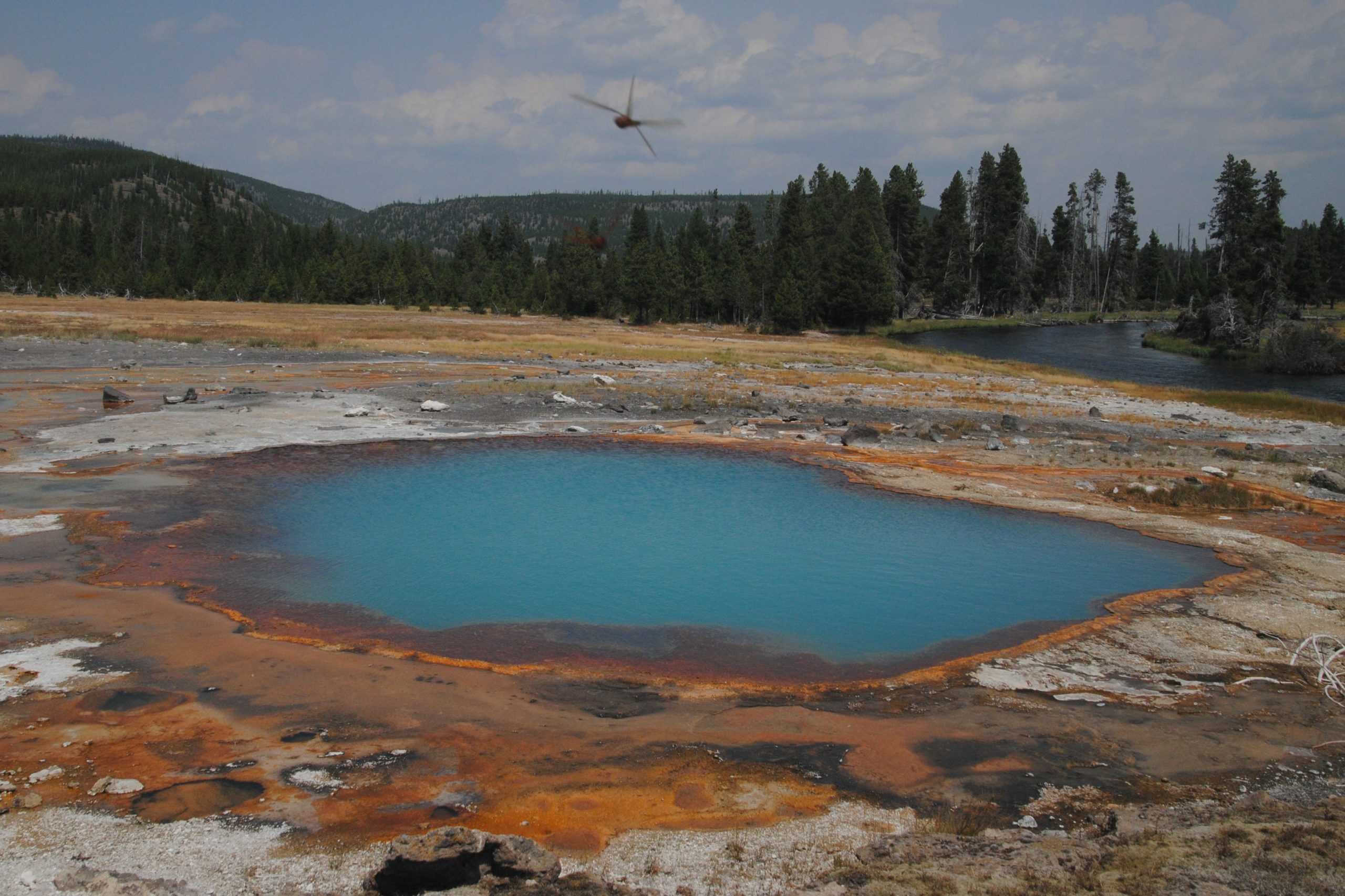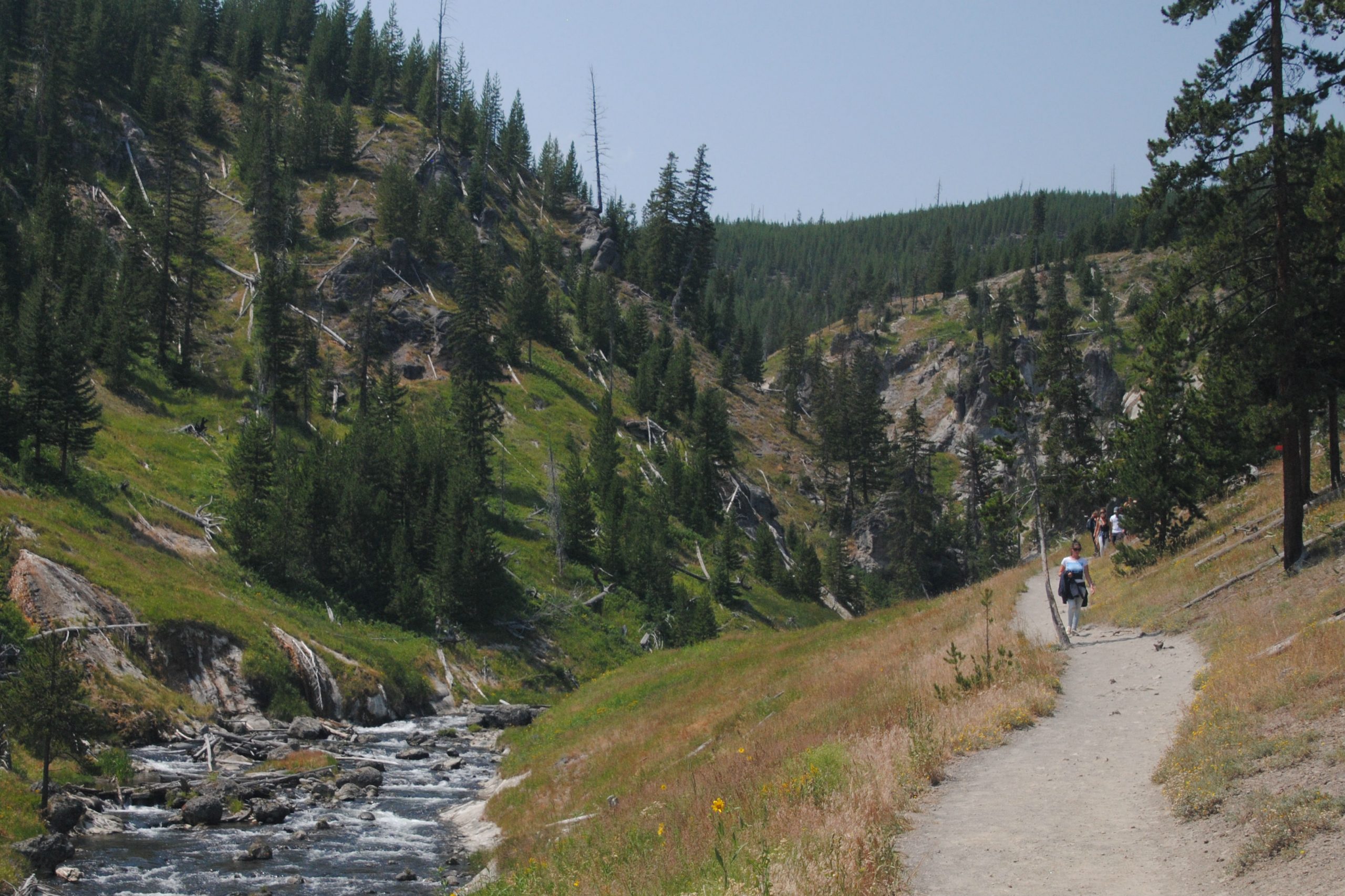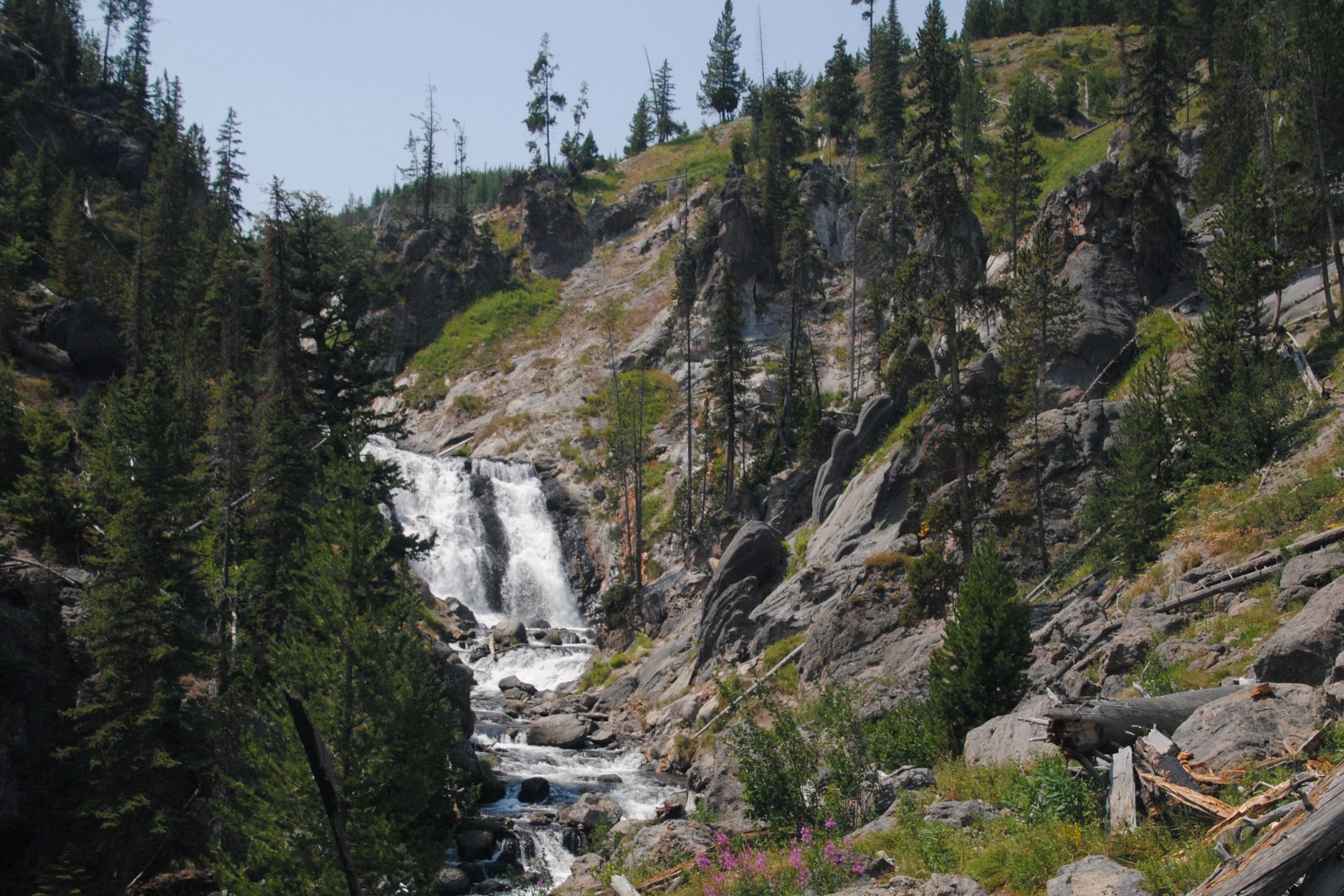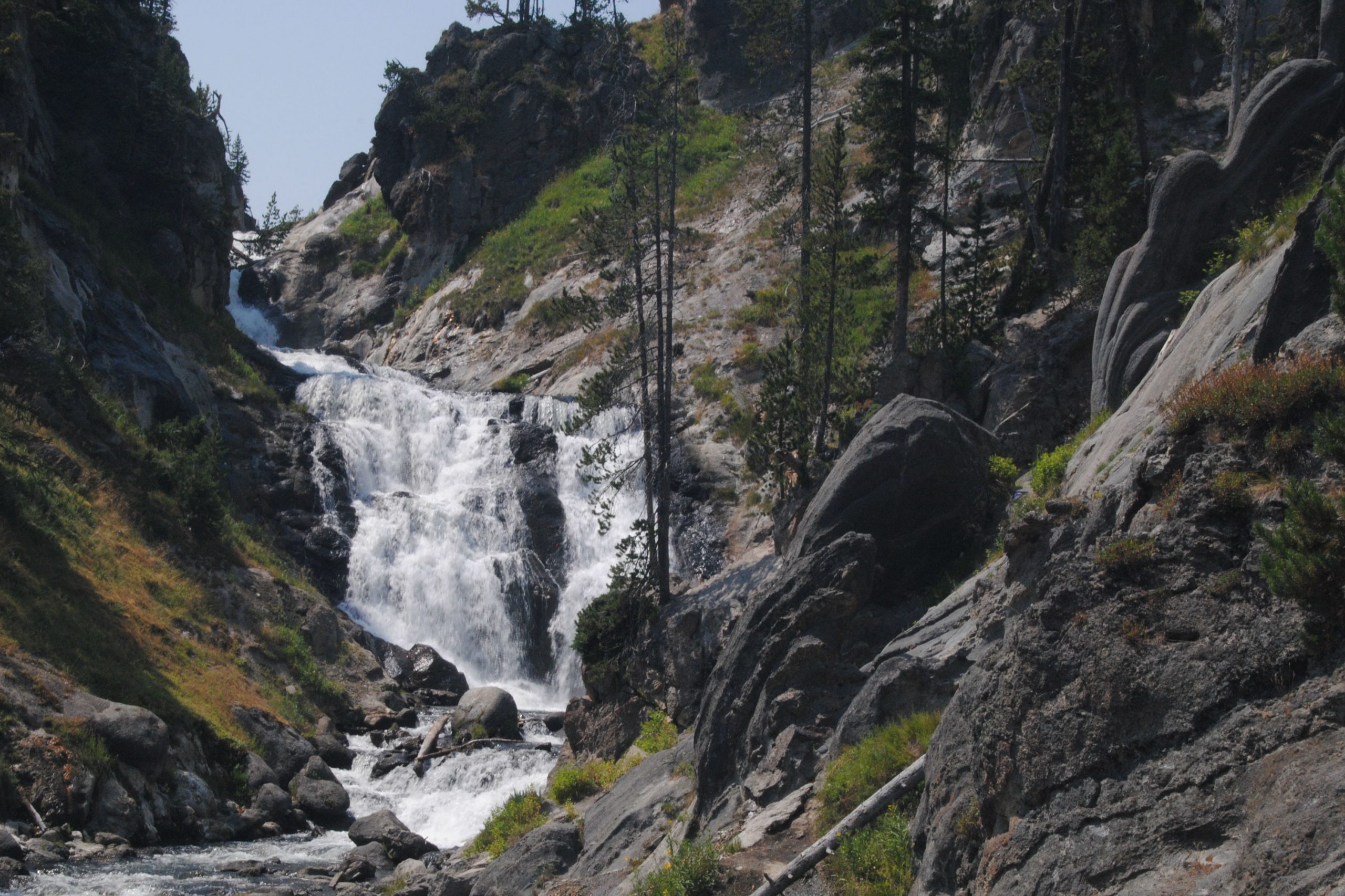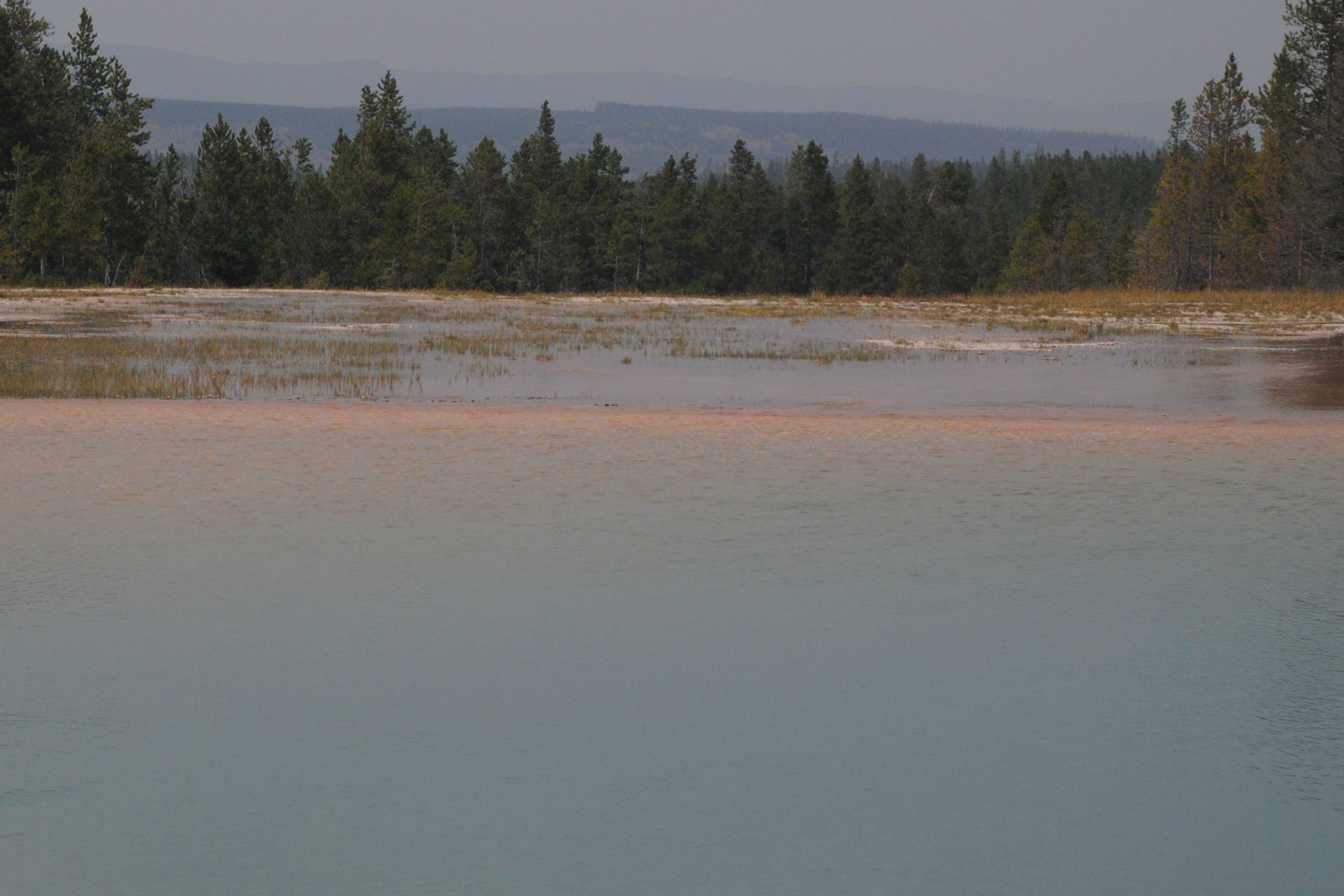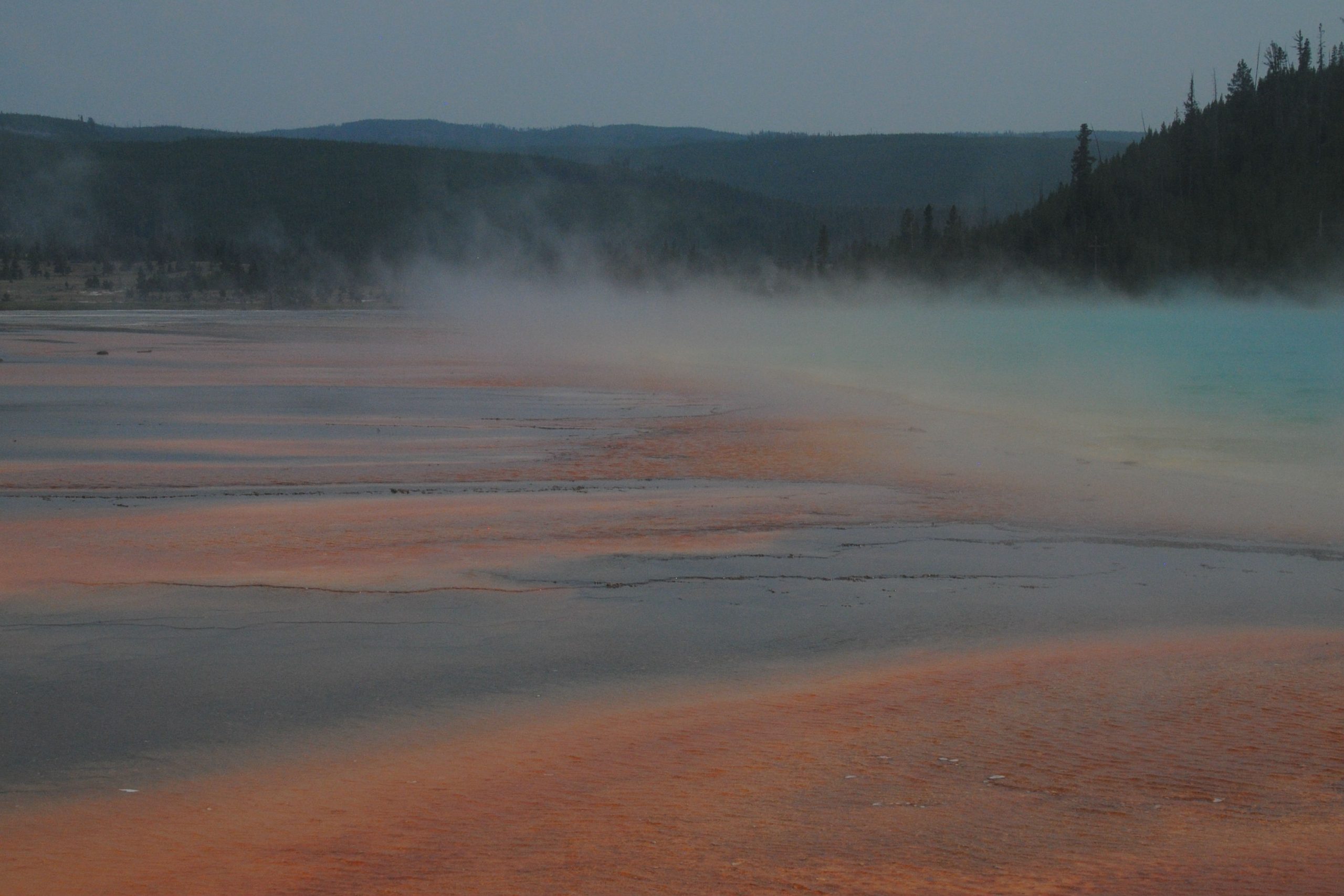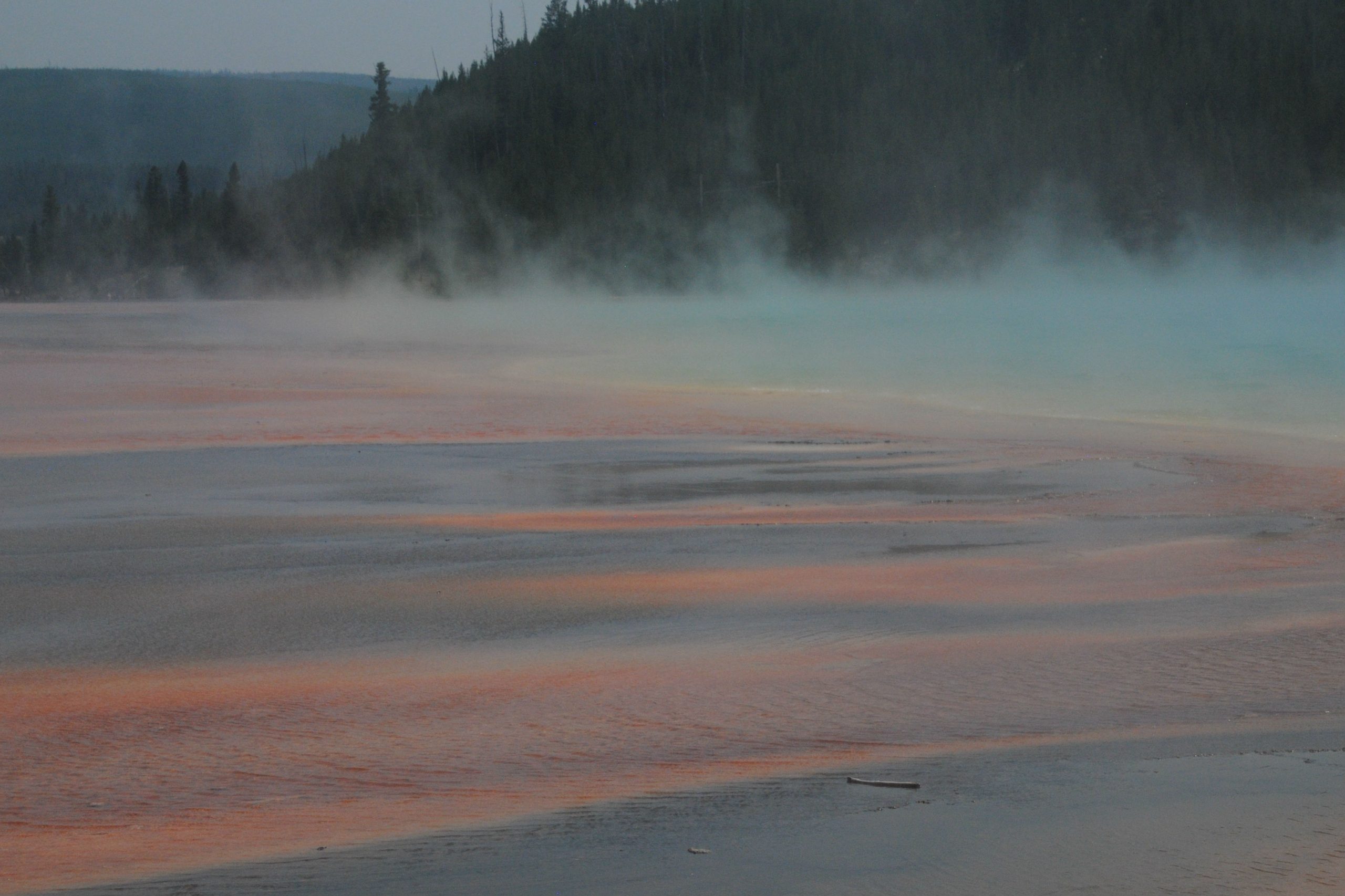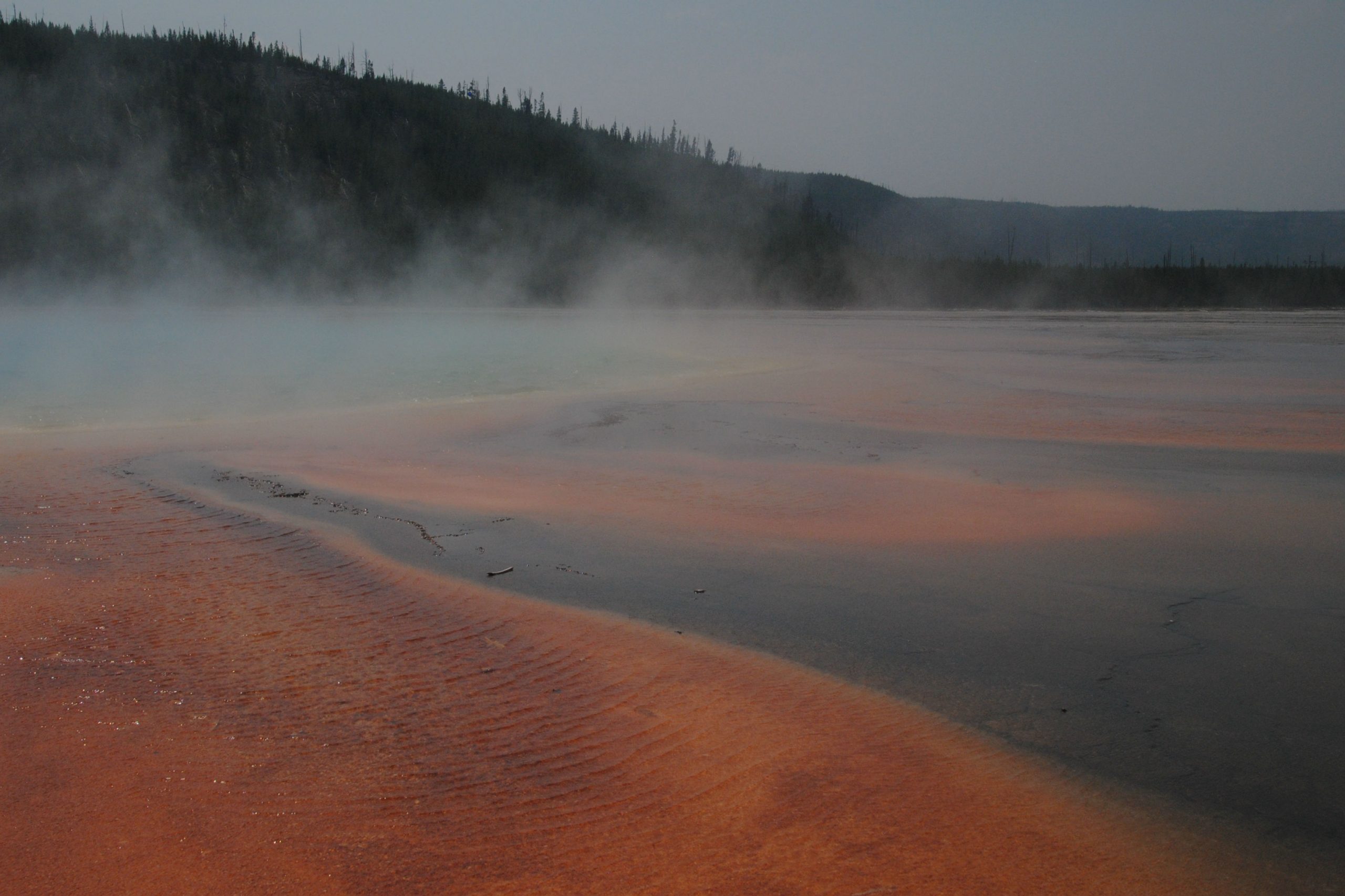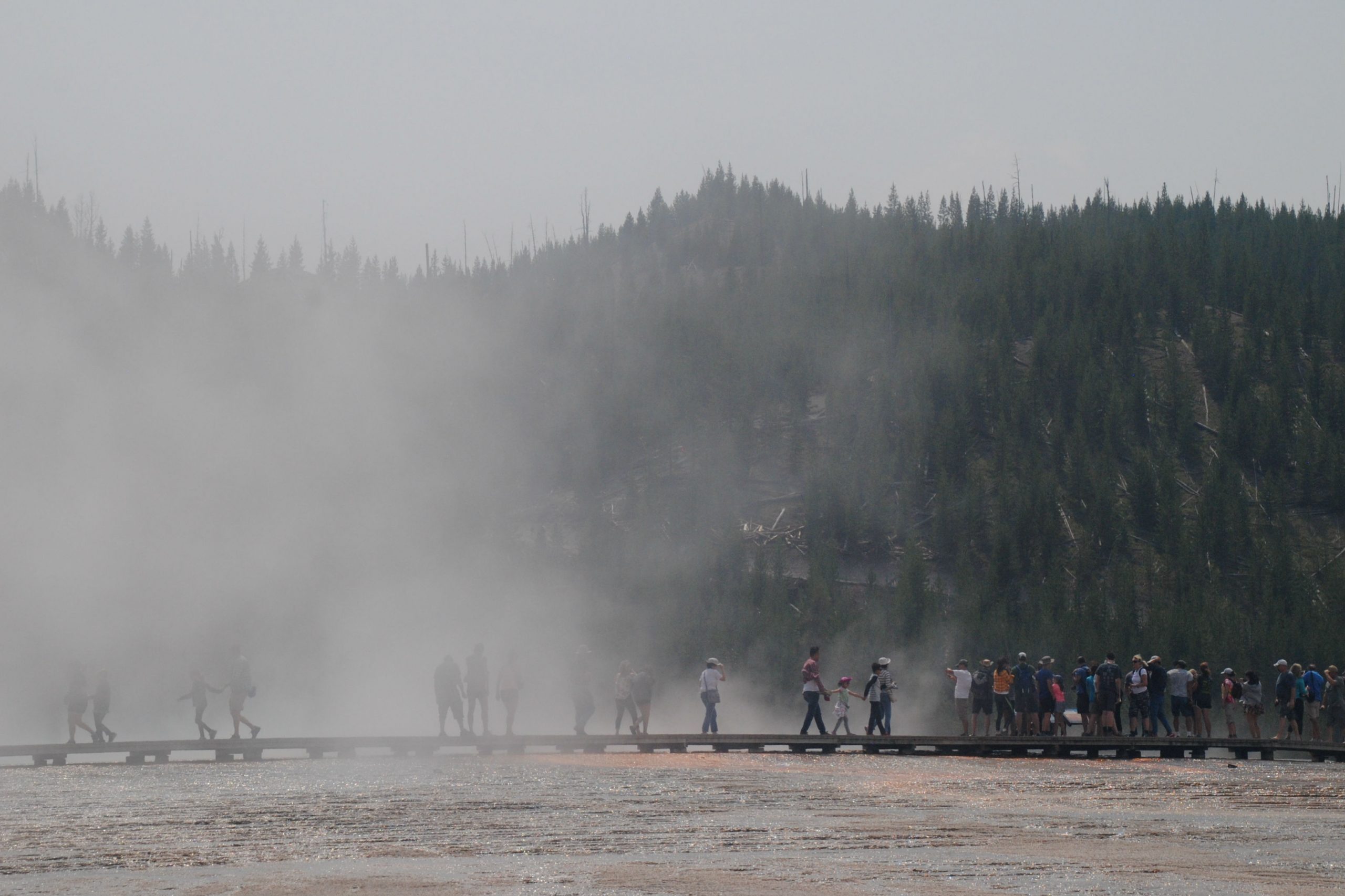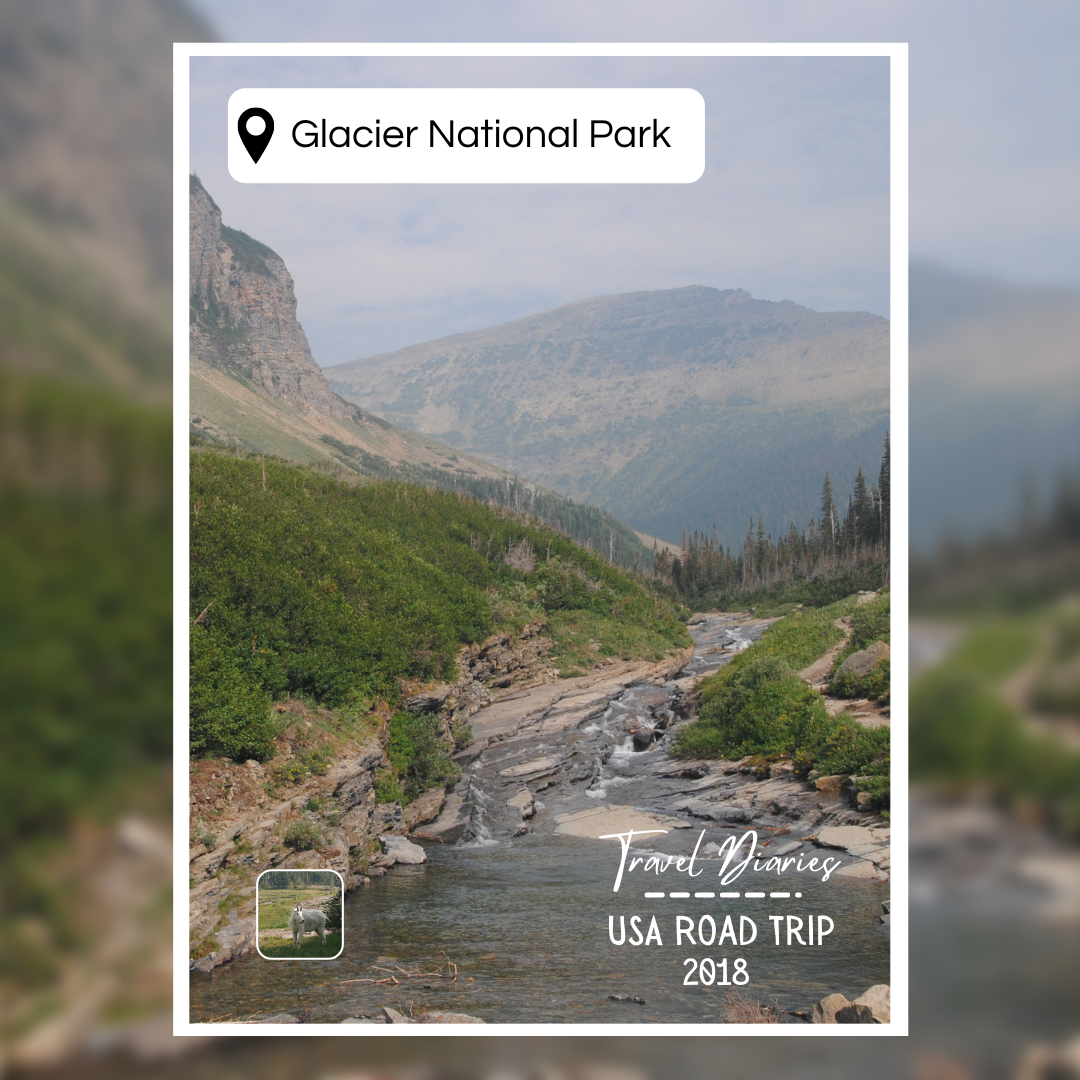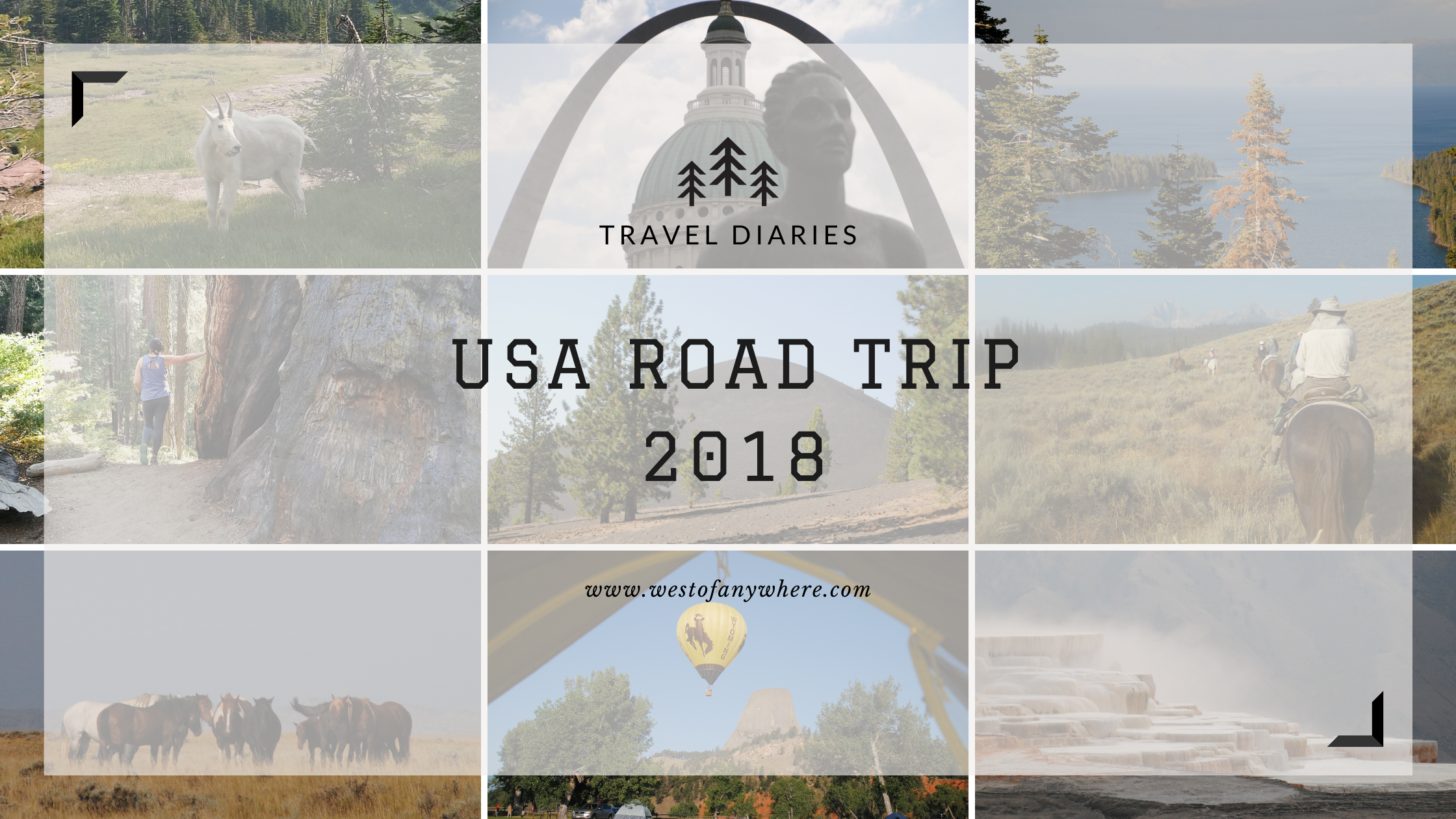
YELLOWSTONE NATIONAL PARK
JULY 31 – AUGUST 4, 2018
Located in the north western of Wyoming, Yellowstone is a 2.2 million acre park, and is the oldest National Park in the USA. The park is situated around the Yellowstone Caldera – the site of an ancient volcanic eruption, and the resultant geothermal activity is a highlight for any visitors to the park. Being such a big park, it takes some time to travel between the sights in the park, and patience is required, because visitation is high, and everyone always seems to be headed in the same direction you are travelling!
Throughout the park, it’s fascinating to see Geyser Basins with Ghost pines be neighbours with Lodgepole Pine forests and lush green hillsides. Yellowstone Lake and river also neighbour some of these regions, and it’s almost impossible to comprehend that the lake can have an average high temperature of 62F, when nearby thermal springs can rate temperatures in the 100’s (F). That’s not even to mention the wildlife. At the time of writing, I haven’t seen a bear (not altogether disappointed), but have witnessed a couple of Bison jams, Pronghorn antelope grazing roadside, and a herd of Elk making the Mammoth town region lawns their own.
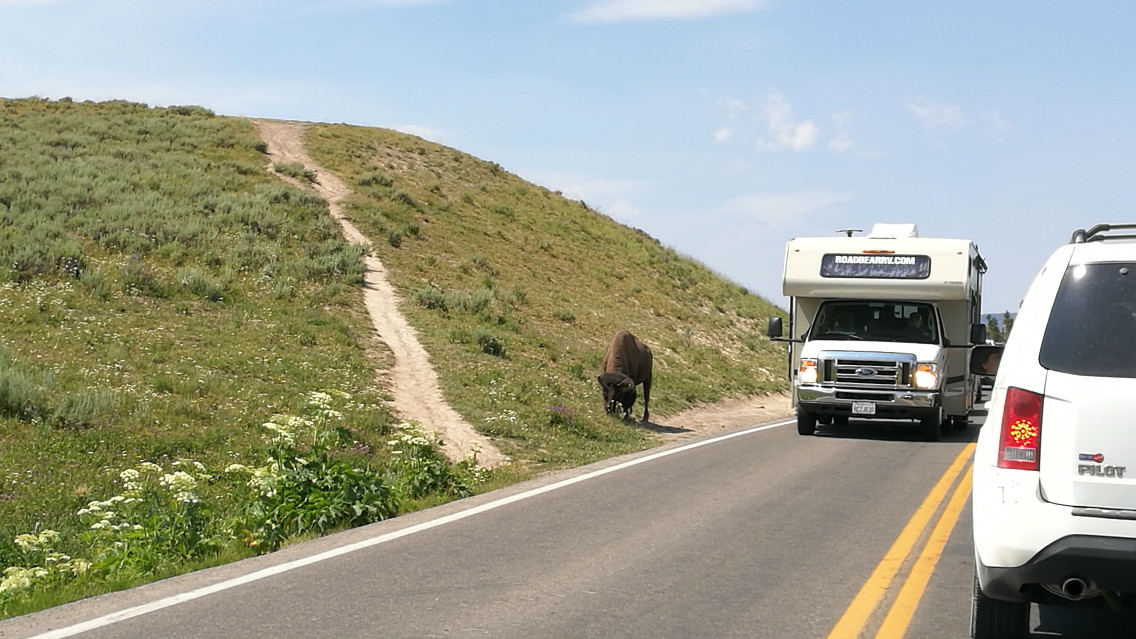
MAMMOTH HOT SPRINGS
Located close to the Northern entrance to Yellowstone, the travertine terraces of Mammoth Hot Springs are created when calcium carbonate is deposited on the hillside. Underground waterways change all the time, and may cause vents or springs to close up, or form in a different location, and this process means that the terraces are constantly changing, and growing over the years. Heat loving microorganisms called thermophiles live in the water and on the terraces, and these microorganisms are what lends the spectacular colours to the springs and terraces. Boardwalks around the terraces allow visitors to explore the different formations, from the bottom of the terraces, right to the top.
NORRIS GEYSER BASIN
Located midway through the park, on the edge of the Yellowstone Volcano caldera, the Norris Geyser Basin is one of the most thermally active areas in the park, and is home to Steamboat Geyser, currently the highest erupting geyser in the world.
Two main trails are available to visitors here, and I explored the Back Basin trail, which was chock full of steaming springs and venting fumaroles. It’s said that the Yellowstone Volcano is still active below the region, causing the water accumulating underground to heat up and erupt through the geysers and springs in the area.
Steamboat Geyser, as mentioned is the highest erupting geyser in the world (approx 380ft/115m), however, it’s eruptions are completely unpredictable, and I wasn’t able to see any more than some bubbling water and steam erupting from the vent at Steamboat. Interestingly, just down the hillside from Steamboat, is Cistern Spring. The stunning aqua blue water in this spring is said to empty out completely when Steamboat erupts, to fill itself again a couple of days later. These were just a few of the highlights of this thermal region, and a 2 hour stroll led me past many other features, including Porkchop Geyser and Vixen Geyser, which thrilled visitors with its minor, but frequent eruptions.
GRAND CANYON OF THE YELLOWSTONE
The Yellowstone River is responsible for carving out the epically stunning Grand Canyon of the Yellowstone. Over thousands of years, the waters here have worked away at the rhyolite rock, carving out this spectacular canyon. The canyon is 20 miles long, and more than 1000 feet wide in most places. It’s said that the top 2 miles of the canyon are the most spectacular, and hot springs have been at action here, creating the unique colours on the canyon walls by depositing iron compounds on the canyon walls.
Many walking trails and overlooks exist along the North and South Rims of the canyon, including a steep switchback trail leading down to the brink of the Lower Falls. While not long, the trail is challenging due to its steep grade and uneven surfaces. It’s worth the walk though, because the trail leads to an overlook that literally sits at the top of the falls, where visitors can appreciate the sheer volume of water flowing over the falls every second. The views down the canyon don’t disappoint either.
Other overlooks to check out while exploring the canyon are Grand View Point, Artist Point, and the equally stunning Brink of the Upper Falls. The trail to the brink of the Upper Falls is much easier to negotiate, but no less stunning, as it’s here that you see the Yellowstone River change from a wide, meandering stream, to a raging torrent rushing over the brink of the falls. Total highlight moment was catching the rainbow that was hovering around in the mist at the base of the falls.
MUD VOLCANOES AREA
This area, once a volcano spewing mud into the region, eventually blew itself apart and became what it is today, a collection of pools containing muddy, bubbling water. There was an especially distinct sulphur smell in this area. I found these to be some of the most unique springs and fumaroles, and some of my favourite in the park. Mud Cauldron, Black Dragon Cauldron and Dragon’s Mouth Spring were highlights. The Dragon’s Mouth Spring was especially awesome, as it’s a cave like opening in the rock, from which water, and gaseous rumblings constantly explode through the cave opening.
OLD FAITHFUL
From my campsite at Mammoth Hot Springs, it was an almost 2 hour drive to Old Faithful, but I felt that such an iconic region of the park couldn’t go unexplored. I arrived at the region with 15 minutes to spare before the next eruption, and found the entire viewing area completely packed with visitors. I found a suitable viewing location, and stood by to wait for the expected eruption. Right on cue, the underground chambers began to unload their water, sending a large spout of water above ground. I’d be lying if I said I was impressed, to be honest, while it’s not possible, it felt contrived almost, and I felt that viewing some of the small geysers in the surrounding regions of Yellowstone seemed more natural.
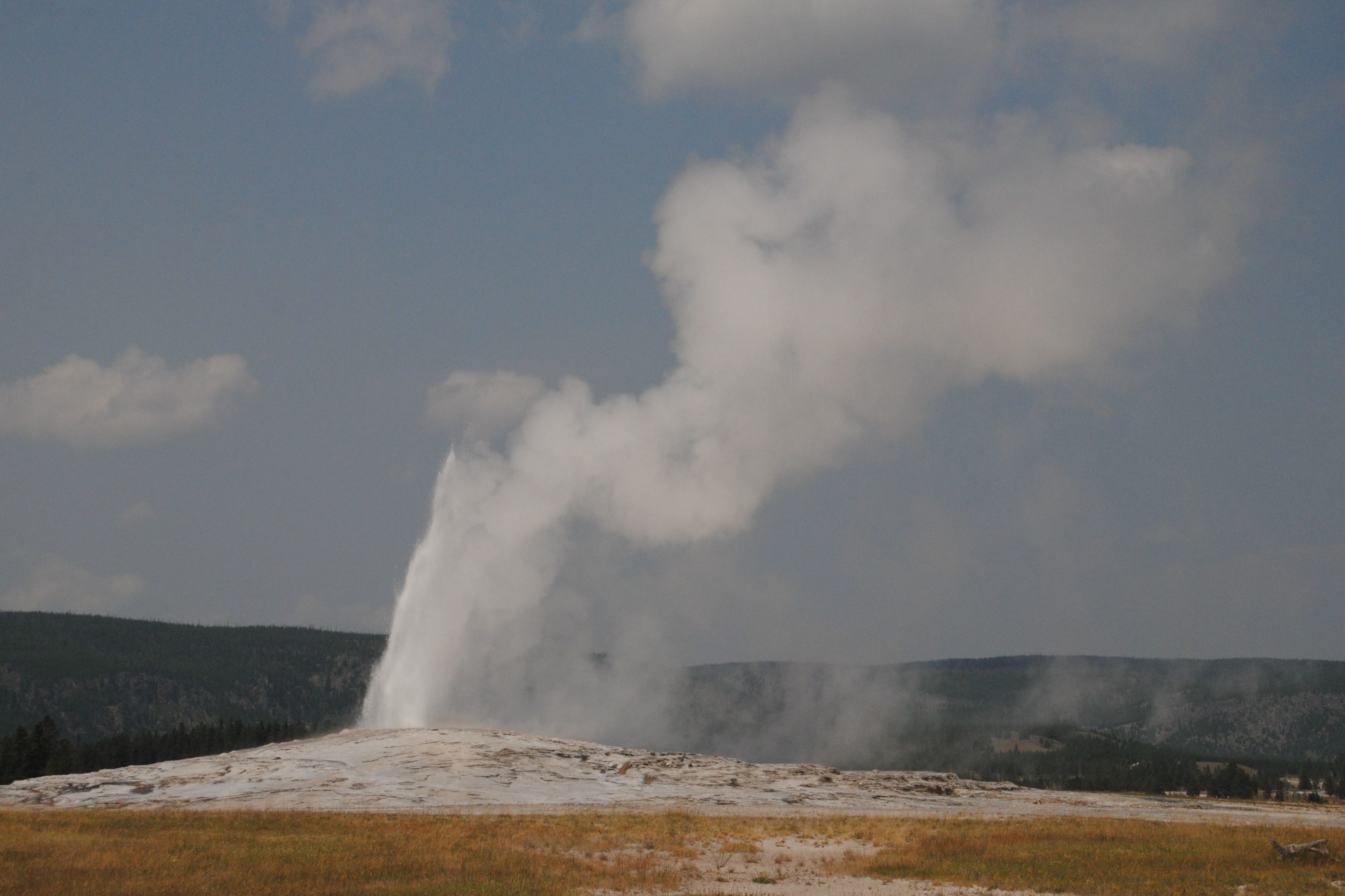
BISCUIT BASIN & MYSTIC FALLS
Biscuit Basin was another thermal area around the midway and lower geyser basin areas. Boardwalk leads visitors past some stunning blue springs, before a trail veers off into a wooded area and leads towards Mystic Falls. This 1 mile trail down the valley leads to an active waterfall, and was an easily walkable diversion from the Geyser basin.
GRAND PRISMATIC SPRING
Grand Prismatic Spring is Yellowstone’s largest hot spring, and it’s spectacular colours, created by the microorganisms living in the water have always drawn my attention and curiosity. Unfortunately, my visit here was less than ideal, as strong winds had picked up, causing the steam rising from the spring to blow across the surface, and into the faces of the visitors on the boardwalk. To be honest, it was miserable, the winds were so strong that it felt like I was going to be blown off the boardwalk at times, and the steam from the spring almost completely obscured the stunning orange and brown colours surrounding the spring. The spring is almost 200 feet (61m) across, and it pours almost 500 gallons of hot (70C) water into the neighbouring Firehole River every minute. It’s easy to see how magnficent this could look if the weather conditions were more favourable.
Check out some of my other USA Road Trip Travel Diaries:

